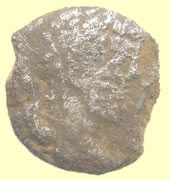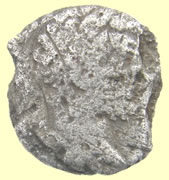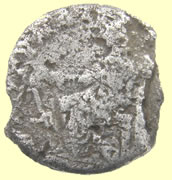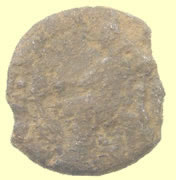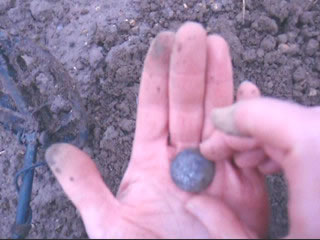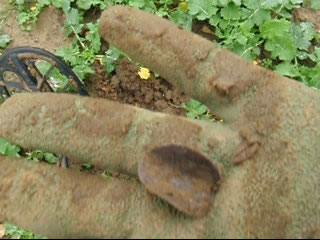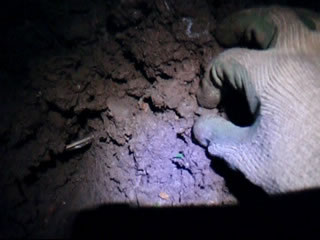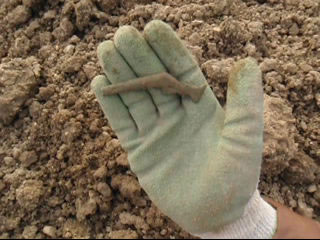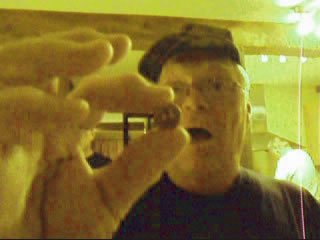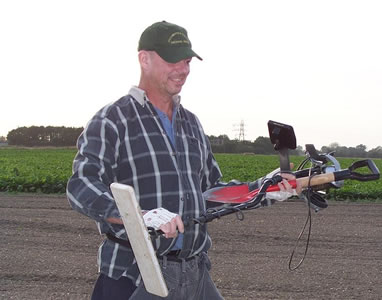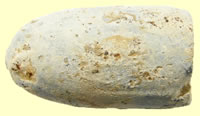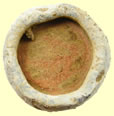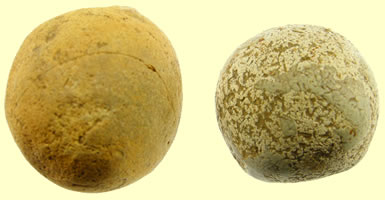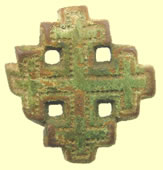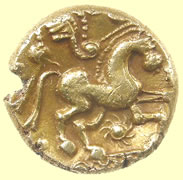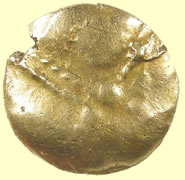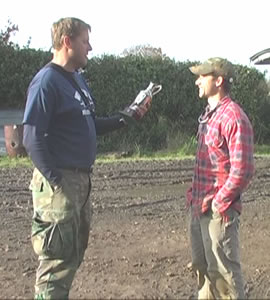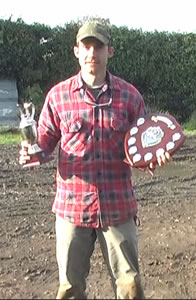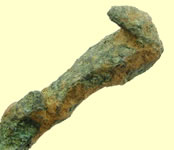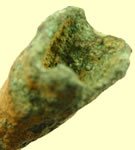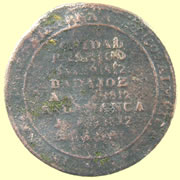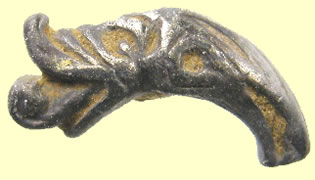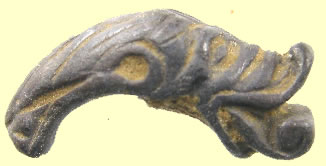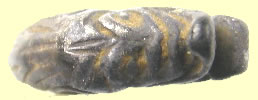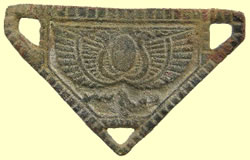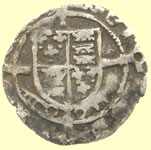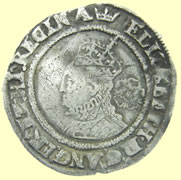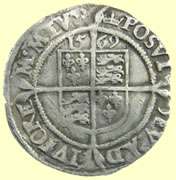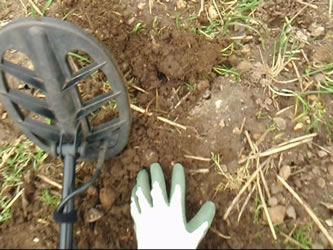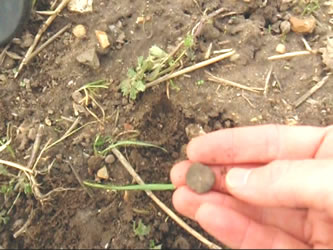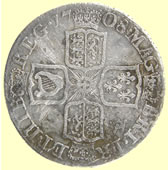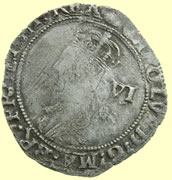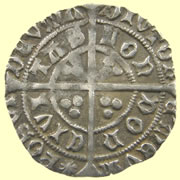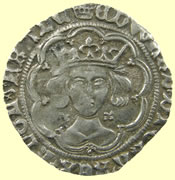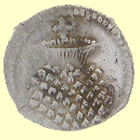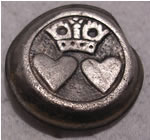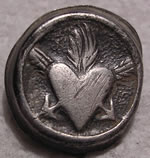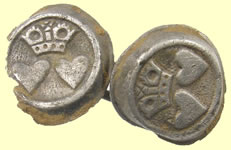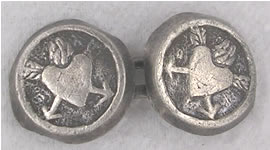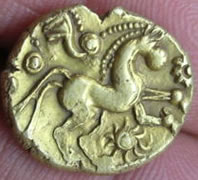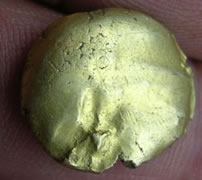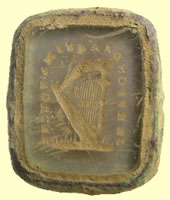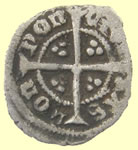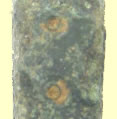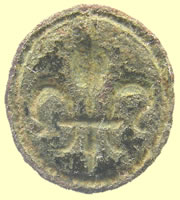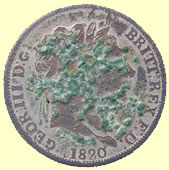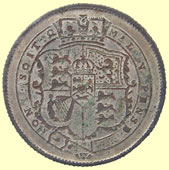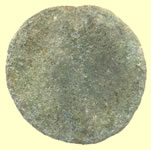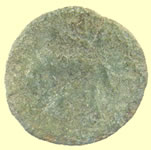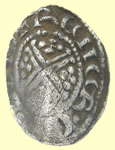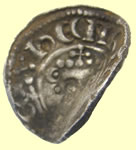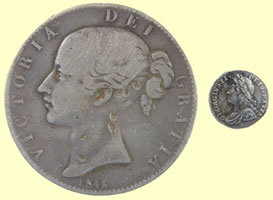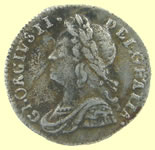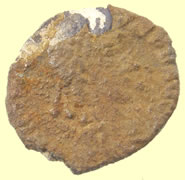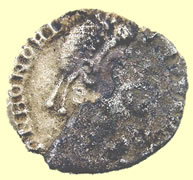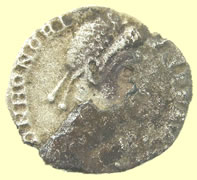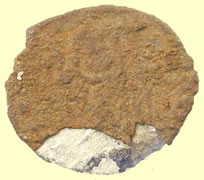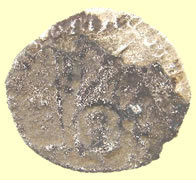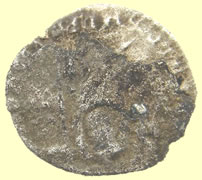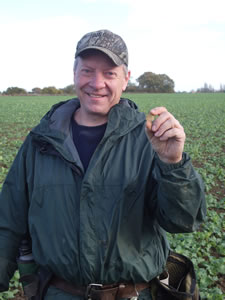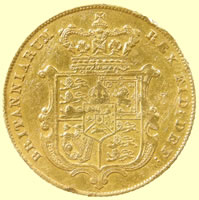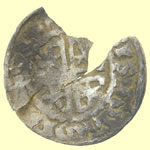- News
- Finds
- History
- Holidays
- Arch'gy
- Exporting
- Treasure
- Awards
- Tips
- Comps
- Forum
- Club info
- Contact
 |
Metal detecting holidays in England with the Worlds most successful metal detecting club Twinned with Midwest Historical Research Society USA |
Nov 2008 to Feb 2009 Latest New page |
||||||||||||||||||||||||||||||||||||||||||||||||||||||||||||||||||
9th Feb 2009 Pickings are slim - posted more finds Pickings were really slim yesterday although a new field was covered with tons of targets. Most of it was trash but Idaho Jerry and Daryl saved the day with a couple of nice silvers. Daryl is using the new E Trac and it continues to be very impressive with this is his 3rd tiny silver of the week so far. The silver Roman found yesterday is now in the 'cooker' to remove the thick crust that grows on early Roman's. In the picture below where the coin is fractured you can see the thick crust clearly. I have posted more finds to the latest finds page.2009 Feb finds
Roman silver coin fragment - 'cooking' it to remove 'hornsilver' crust
Very interesting hammered silver penny - 17.36mm, 1.06g 1341 AD Edward III florin type CIVI/TAS/DVN/ELN - Durham mint - note the crozier to one limb of cross in inset (after ELN) Obv EDWAR ANGL DNS HYB
Interesting small foreign silver coin with a copper tinge 16.71mm,0.42g - need to check World coin book Obv GIA DVX.FIRIO.G****
Straightened 1279 Edward 1st hammered silver penny - Cross potent Class 1d obv EDWR ANGL DNS HYB Rev CIVI/TAS/LON/DON - London mint 1.23g, 18.82mm
|
||||||||||||||||||||||||||||||||||||||||||||||||||||||||||||||||||
8th Feb 2009 First hammered silver Orv thought he had found a rough old Elizabeth penny in the dark but when he washed it up he suprised to have found one of the tinest hammered coins there are, an Edward II 1/4 penny in superb shape. Ohio Scott made an amazing couple of early copper finds in the same area, two 1674 Charles II farthings. These are real hard to find in any kind of legible condition and he got two with the dates showing next to each other.
Tiny 1307 Edward II hammered silver farthing (1/4 pence) Type 28 - 12.44mm, 0.29g Ob EDWARDVS REX Rev CIVI/TAS/LON/DON - London mint
2- 1674 Charles II milled copper farthings
|
||||||||||||||||||||||||||||||||||||||||||||||||||||||||||||||||||
7th Feb 2009 First hammered silver Some great bits and pieces turning up including our first hammered silver coins of the season. Min Daryl has swapped his old machine for the new E Trac and found two really crisp coins, Venetian Soldino and a mint Commonwealth penny. Min Mindy pulled up our first ever cut 1/4 Henry II Tealby coin and a rough Elizabeth 1st six pence. I have started a new hunt page and uploaded more finds to the page. 2009 Febfinds including a couple of really crisp 17thC hammered copper trade farthing. Trade farthings. I have updated the forum competition page with the latest milled silver count.
|
||||||||||||||||||||||||||||||||||||||||||||||||||||||||||||||||||
6th Feb 2009 Guys first day back - nice relics Hunts are finally underway again but the ground has been very wet. The guys therefore picked a grass field near one of our new Roman areas that we have never hunted. It produced some interesting finds including a really chunky C 10thC Saxon harness check piece found by Min Mindy, two Roman bronzes with some detail and a bottom fragment of would have been a spectacular Roman enameled head stud type fibula brooch. The guys found 4 late milled silver including 2 large silver florins (24 pence) and the usual, copper and buttons etc . I will start a new hunt page and start uploading more finds shortly.
Incomplete harness strap distributor (probably a bridle cheek piece) of the late Anglo-Saxon to early Norman period
ROMAN (Certain) to ROMAN (Certain), Circa 75 AD - Circa 200 AD bottom part of the same type of enameled brooch below found earlier in the season
ROMAN (Certain) to ROMAN (Certain), Circa 75 AD - Circa 200 AD
1st/2ndC Roman bronze sent for ID 29.47mm, 15.03g
3rd/4th C Roman bronze sent for ID 26.44m, 4.89g |
||||||||||||||||||||||||||||||||||||||||||||||||||||||||||||||||||
1st Feb 2009 4 more days to go - Awards and Prizes
Excitement on the members forum is building as we near the kick off to the 2nd half of the season. It is great to start a month earlier this season as the land conditions are just perfect out there, tiny green shoots on pool table flat fields. I went for a drive to see a couple of our farmers and their land is in stunning condition so the coil can be flat on the deck. We still have lots of virginal sites to hotspot and our old ancient lands have compressed nicely over the holiday break. As day light is shorter this time of year we are going with the earlier start time and will be on the fields by 7am, all the guys are coming equipped with night lights if they want to continue to late. Orv and Mindy who are here the first week get to take their Celtic gold coins finds home they found in the first half of the season as their exports were approved. The current gold total for the half season is on par with other seasons and stands at 13 pieces. Special thanks to all the members for there continued support on the forum keeping it light hearted and fun during the break. Hopefully the first team can get the juices flowing with some more great finds.
Remember if you want to take the new fun 'History Heathen' pub quiz then let me know - Cal Jim is currently in the lead and winning the free trip with a score of 32 out of 50 questions answered correctly . Atlanta Mike is currently winning the 'Coin hunter of the year' award with a superb total. Guys have yet to vote for the 'find of the year' but there are some clear monster finds in the running to win. Both the Wayne Otto and Canadian Greg memorial awards will be decided on in April. Free forum competition to guess the number of milled found this season stands at 158 and Ark Mary is in the lead. Prize is a free trip and you can check your guesses at that link.
More fixed members coins posted on the coin straightening page
1247 Henry III hammered silver voided long cross - Type IIIa Moneyer Nicole of London
1247 Henry III hammered silver voided long cross half penny 0.62g
1217 Henry III hammered silver short cross 1/2 penny - class 6b2 Moneyer Pieres of London
1533-42 Henry VIII hammered silver groat - arrow mintmark |
||||||||||||||||||||||||||||||||||||||||||||||||||||||||||||||||||
31st Jan 2009 More unpublished finds and fixed coins I have just about finished uploading the last of the unpublished finds out of the export pouches. There is a very interesting widget which appears to be a kind of Roman protected loop terret but feels more medieval. Luckily I am dropping the last of the finds for recording and ID to the museum next week so I will include it in the bag. A couple of really rare finds include our first ever Commonwealth period trade weight and a medieval spur with only 4 spikes which is not in my ref books.
1464/5 Edward IV hammered silver penny - Type VIIi - 0.93g, 18.07mm obv EDWARD DI GRA RE ANGL Rev CIVI/TAS/EBO/RACI - York Mint - Archiepiscopal issue
1356-61 Edward III hammered silver groat - Initial cross 3 Needs straightening to decide on the type rev CIVI/TAS/EBO/RACI York mint 22.24mm, 1.73g
1352-53 Edward III hammered silver penny - pre treat period series D - annulets in all 4 qtrs on obv Ov *DWAR Rev CIVI/TAS/***/*ON- London minttype
|
||||||||||||||||||||||||||||||||||||||||||||||||||||||||||||||||||
30th Jan 2008 More great repairs - exports completed Archived a chunk of this news page to speed up load times Sept 2008 to Nov 2008 All export applications have been made for the first half of the season and you should all have your word documents e-mailed to you over the next couple of days with detailed finds lists and coloured pictures of all your finds. Special thanks to the guys at export duty for their exceptionally fast turnaround time with application approval. The new procedure of annotating those finds due to go into the museum is working really well. Penn Christies silver annular brooch was reported as treasure but eventually disclaimed by the British Museum and returned to her. It is our first trial of an artefact being repaired and what a stonking job he made of it and he even cleaned it for us !! I have updated the coinstraightening page with the latest fixed items and a huge 1549 -51 Edward VI hammered silver shilling which in one piece would have been a monster find.
Penn Christies annular silver brooch repaired and he even cleaned it !
Edward III 1344-51 hammered silver florin penny Obv EDWAR ANGL DNS HYB Rev CIVI/TAS/LON/DON - London mint 16.74mm, 0.99g
1279 Edward 1st hammered silver florin penny -class 10cf3 Obv EDWAR ANGL DNS HYB Rev CIVI/TAS/LON/DON - London mint 1.35g, 18.25mm
1570 Elizabeth 1st hammered silver 6 pence - castle mint mark
1351-2 Edward III hammered silver groat (4 pence) Inital mark Cross 1 - 4.43g,25.69mm obv EDWARD DIV REX ** HYB rev CIVI/TAS/LON/DON - London mint
1351-1361 Edward III hammered silver groat (4 pence) - pre treaty 3rd coinage obv ****RD.D.G.REX ANGL Z FRANC HYB Rev CIVI/TAS/LON/DON - London mint 26.29mm, 4.26g |
||||||||||||||||||||||||||||||||||||||||||||||||||||||||||||||||||
29th Jan 2008 Coins back from repair - more finds and updates I picked up 35 of the guys repaired coin finds today from our goldsmith and he has done a remarkable job again. I have posted a couple below as an example and I will post the rest as I clean them up and re- photo them. However our first two ever coins broke during the annealing and straightening process, an Irish Edward 1st and a Medieval short cross penny. Both of these coins were folded and squashed flat and unfortunately are of a very low silver content type. We discussed the way forward to repairing them and because the folded edge is concave he will file the edge flat and silver solder the two halves together. It will be interesting to see the results of this technique as we have success in the past joining a tiny broken medieval cut half penny.
1619 -25 James 1st hammered gold Quarter-laurel - 2.24g, 19.46mm 2nd coinage
1507-9 Henry VII Regular profile issue hammered silver groat - Triple banded crown - Pheon initial mark 2.90g, 27.51mm Obv HENRIC VII DI GRA REX ANGL Z FRA Rev POSUI DEUM ADIUTO(R)E MEU(M)
1472 Edward IV hammered silver groat Type 10 , initial mark sun both sides, trefoils by neck, long cross fitchee obv EDWARD DIA.REX.ANGL.Z.FRANC Rev CIVI/TAS/LON/DON - London mint 25.18mm, 2.79g
Uploading Georgian military artefacts to our foundintheground database
|
||||||||||||||||||||||||||||||||||||||||||||||||||||||||||||||||||
27th Jan 2009 PC died for a few days - sorted out the library - ordering books Just over a week now to the start of the 2nd half of the season. I have been offline for a few days as my main PC power supply suddenly died. I was able to use my laptop for answering e-mail etc but it is not up to the job of updating our site. It is now fixed so I can get on with more exports and updates. I took the spare time to sort out our reference library as those last 13 volumes we bough have literally pushed it off the edge. I went and saw a local pine company who making us up a large made to measure bookcase that will fit all the large volumes perfectly, should be here in a few days. I have also been reading through some of the fascinating information contained with these new books and guys have shown interest in buying a set as they are such fantastic value. Senior member Tenn Brad, who has just started his degree in Archeology at Leicester University, having been sponsored by our club has asked me to ship him a full set. They are far too heavy to mail so I have bought another spare set for him to take home on the plane after his next hunt. The Archeology trust that stocks these books is only a 15 minute drive away from my house so they are easy to pick up. If you would also like a set then drop me a mail and I will have it ready for collection by you on your next trip.
|
||||||||||||||||||||||||||||||||||||||||||||||||||||||||||||||||||
23rd Jan 2009 More exports and finds - pound drops again to 1.36 Canadian Rod our club historian is currently updating the laminated master map with all the new land ready for the start of the 2nd half of the season. He has also been researching the new land and found some remarkable features including another recorded medieval fair and a Roman villa. The map will be available to view shortly. More exports licenses arrived approved yesterday so most of the guys returning in the 2nd half of the season can now take their export pouches home. I have another meeting with the museum in 2 weeks to drop off more finds for recording and further analysis and pick up the ones that have so far been recorded on to the PAS database. There might be an element that will still with the museum or with the coin straighteners, so take home the bulk of your exports and send me back you export license and I will post those few back by surface mail when they are ready. Mass Bruce had a great collection of 18thC Royal artillery buttons in his export pouch and an unrecorded early 28th regiment of foot , Colchester has been a garrison town since the Romans and the area we hunt has had amazing amount of military activity. I have updated Army numbered regiment page on the site. Numbered regiments
Early one piece 28th Regiment of foot pewter button- not in ref books or Troiana Some how I missed recording his really early coin weight on our coin weight page - just updated it now
1422- 61 Bronze uniface Crowned Three lis in shield French Ecu gold coin weight. No Letters by the shield indicate English version.
Nice group of one piece 18thC Royal Artillery buttons This is an interesting piece below I have been researching which I initially thought was a Roman latch key with the broken loop on the end. I have however found the exact type recorded in CAR report volume 5 Fig 66; 2989 as a Roman to post Roman balance (scale with beam arms of equal length). The arm has the same punched dots clearly visible on Mass Bruce's find. 'The lack of any marks to separate the punched dots into groups probably indicates that each dot represents one pound, thus making it impossible to distinguish between Roman and post Roman weights'
Roman balance arm - punched markings along stem -103.46 mm L Another interesting find is this silver decorated clog fastener hallmarked with the makers name and George II bust duty paid impression.
18thC silver decorated clog fastener maker WI WW -Wakely & Wheeler London - George II duty paid bust |
||||||||||||||||||||||||||||||||||||||||||||||||||||||||||||||||||
19th Jan 2009 More finds - Huge Celtic gold hoard found - Pounds drops to 1.38 to the dollar This world recession is certainly a bonus to hunting here as the dollar hit another all time high now today at 1.38 to the pound. As we are priced in pounds this makes us the cheapest detecting tour in the world now and over $800 to $1000 cheaper per week than the other UK tours. The Canadian dollar is only 1.75 and the Euro 1.07 which makes us 30% cheaper than last season. Buy them pounds now and make a killing on a trip. Slots are running out fast so check out what's left on this page. http://www.essexfarmholidays.co.uk/fullboard.htm. Remember you can book and pay for your trip now for next season and take full advantage of the ridiculously low exchange rate and cheap airfares. A huge Celtic gold coin hoard has been found locally here but unfortunately not by us, what an amazing find. It certainly gets the juices following for the start of the hunts on the 5th Feb. We have found several Celtic gold hoards here but not in that magnitude.
One of the UK's largest hauls of Iron Age gold coins has been found in Suffolk. The 824 so-called staters were found in a broken pottery jar, click here for full story I have just posted more export find lists and pictures on the members forum and updated the club records page with 2 new entries. This is the page of the oldest, largest, biggest etc found by the club Records Page
GA Harry had a couple of nice bonus lead finds in his export pouch. The trade weight is a Henry VII or VIII with the crown hallmark (Ref Rogers) dating to around 1509 - 1547 AD, next to it is his 15th C lead token find. He also had this neat 18thC winged barrel key complete and unbroken.
We record every Roman coin found here including the 'grots' as there is a project at the museum to plot the spread of Roman coins found in Essex. The one below was found by Chicago Ron and this is how they are recorded on the PAS database.
PAS database Ref ESS-FA7CA4
|
||||||||||||||||||||||||||||||||||||||||||||||||||||||||||||||||||
17th Jan 2009 Halved this news page - more updates I have been updating the award and prizes page with latest pics of awards up for grabs this year and last years winners pictures. A huge wad of 19 approved export license arrived this morning, finders list posted on members forum. Here are two more of our latest finds entered onto the national PAS database. Both were found by Chicago Ron on a new Roman area he and his team discovered in the first half of the season on new land.
Pas entry ESS-FBA194 LATE IRON AGE (Certain) to ROMAN (Certain), Circa 1 AD - Circa 200 AD
PAs ref ESS-FB7F44 ROMAN (Certain) to ROMAN (Certain), Circa 75 AD - Circa 200 AD |
||||||||||||||||||||||||||||||||||||||||||||||||||||||||||||||||||
15th Jan 2009 Museum meeting and ID's - more books - PAS find entries
I had a meeting yesterday with the museum to drop off another large batch of finds for recording and further ID. I was lucky that their Bronze age expert was around to look at Canadian Victor's 2000 BC flat axe find. The axe is very small in comparison to the one found by Van Brent and I thought it might be a chisel. Their experts suggests that it is a votive offering or a miniature axe for perhaps ceremonial use of that period 2000 BC, it will probably go off to the experts at the British museum for their views, great find.
The FLO at the museum has seen a complete example of this spoon with the crude etched face and it was dated as 1400's AD which is a great early spoon.
The FLO also ID'd what I thought was a Roman reigns guide as a late Roman period buckle, half the buckle is missing.
This Roman pot foot was confirmed as Roman and a drawing exists within a set of Roman 'Finds from Colchester' Volumes the museum has. They are brilliant ref books so I drove to the Colchester Archaeological Trust this morning and picked up the 13 books in the set. I have not seen these advertised in any of the book shops I use so here is a link if you want a copy. They cover every aspect from pottery, glass, bones, relics, coins from Roman through Anglo Saxon. They are tremendous value at only £160 for the set direct from them. http://www.catuk.org/ click on Archaeology reports
Some more light reading for bed time !! This cut 1/4 hammered was lurking in Vegas Jack's export pouch and is badly debased silver and will not clean up. Luckily it has the part legend RIO which only appears on the reverse of voided long cross pennies of Henry III, On the obverse you can see VS R which is part the legend HENRICVS REX. This is a man in tune with his machine to make this tiny find.
1247 Henry III voided long cross hammered silver cut 1/4 penny RIO - hE(NRI - hE(N/RIO/NLV/NDE - Moneyer Henry of London Mint I have the PAS printouts of all our recent finds that have been recorded on the national database. The fibula brooch is an important ID as we have found several in the past and they are casting failers. I will post a load more entries during the week.
PAS entry ESS-FB16B5 LATE IRON AGE (Certain) to EARLY ROMAN (Certain), Circa 20 AD - Circa 50 AD
ESS-FED0E7 MEDIEVAL (Certain) to MEDIEVAL (Certain), Circa 1200 AD - Circa 1400 AD |
||||||||||||||||||||||||||||||||||||||||||||||||||||||||||||||||||
13th Jan 2009 'Lead is your friend' - more approved exports I have just posted more approved export licenses received this morning onto the members forum.
Various lead token finds this season We have a saying here that 'lead is your friend' as it might be a pain in the butt to dig obscure chunks but so many great finds are made of lead like Pilgrims items, weights, lead shot, early tokens etc. I have just completed Ark Gary's export pouch and originally I thought this was a lead prism standing weight but it is a 1/2 pound Medieval lead shield weight with three prancing lion symbols on it. The David Rogers lead weight book shows has an exact match Page 37 Fig 86 - Three Lions passant guardant to the right in a border with bezant above. What a great find. This is only our 2nd ever lead shield weight we have found, the first one was found by Cal Jim on the same new site we just started searching this season.
Medieval lead shied weight - Lion facing left His Medieval lead token find is based on the long cross hammered silver pennies of the period and this example has three pellets in each quadrant exactly like an Edward 1st penny Circa 13th C. This is a type 2 using the Powell 32 classification system for lead tokens.
Medieval shield 1/2 pound lead weight-48.3mm W x 56.09 mm H x 13.69mm L next to a Medieval lead token - long cross and pellet Type 2
Roman lead slingshot and medieval lead plumbob I have just uploaded more complete find lists and export pictures onto the members forum
1**. Roman bronze coin Trajan Sestertius (98-117 AD) |
||||||||||||||||||||||||||||||||||||||||||||||||||||||||||||||||||
11th Jan 2009 ID help and foundintheground forums - more unpublished finds I keep getting dozens of e-mail from guys wanting help with find ID's by e-mail. I never open attachments due to all the viruses going around so unless you post them on the foundintheground forums I cannot answer your questions. Foundintheground.com is our finds database and a forum to log all our outstanding unknowns. If you can ID any of the outstanding finds then you win a free finds tray http://foundintheground.com/. There are multiple forums for all the different type of finds for ID from Military buttons to Roman.
If you have not received a reply to any mail then post your find on our ID forums and we will try and help you. More unpublished finds below from the export pouches.
|
||||||||||||||||||||||||||||||||||||||||||||||||||||||||||||||||||
10th Jan 2009 First exports back - Serious hard core hunt for Nov 09 The clock is ticking down for the start of the season and I still have a dozen or so exports to complete yet, I will just get them finshed and it is time to start all over again ! I have already received the first batch of the approved export licenses and I have posted the names on the members forum. We have lots of interesting new areas to explore in the 2nd half of the season including two potentially really exciting Roman sites, members are getting well stoked.
Louisiana Sal (mudslideslim) is planning his next trip and is one of our 'hard core' breed of detectorists that come here. He has booked the week 16th Nov to 23rd Nov 2009 and is going to run a serious hard core Barn hunt next season. He just dropped me a mail with the details and has a couple of free slots. Check out Sal's unique finds from the field video's. Also check out his own detecting video web site http://treasureoutfitters.com/. Drop Sal an e-mail for more info. You must be HARDCORE to join this hunt as there will be no finishing early. However you can always take a day off and stay in the Barn and soak in the hot tub !!
|
||||||||||||||||||||||||||||||||||||||||||||||||||||||||||||||||||
9th Jan 2009 Repairs to coins and ring brooch I just posted more export find lists and pictures to the members forum including Chicago Reid's monster sized pouch. There were some great bonus do dads in the pouches I will post later. I took a huge batch of 35 members coin finds into our Gold Smith be repaired, it includes that stonking James 1st gold. Within the last batch to be repaired we trialed having a broken hammered medieval cut half penny silver joined and it was a great success. This time we have a small Henry VIII penny broken into 3 small pieces to be joined together so it will be a great test of his skills. I also took in a disclaimed treasure of a annular brooch that Pen Christy found to be straightened. It will be interesting to see how it turns out. I will be posting pictures of before and after shots again on the Coin straightening page
Plough damaged coins |
||||||||||||||||||||||||||||||||||||||||||||||||||||||||||||||||||
7th Jan 2009 More missed finds and new export procedure I agreed a new procedure today with the BM to make it easier for the advisors that approve the export license to see the finds that are currently with or due to go to the museum FLO for recording from the sheets. Here is the first sheet of Vegas Mike's pouch where item's 12 and 14 are due to be recorded. On you export documents you will see this annotation now. Metal detecting finds for export found Sept 2008. Location East of Colchester. All important finds recorded with PAS, Celtic Coin Register and Fitzwilliam museum. Finds marked with ** are with or due to taken to Colchester FLO Laura McLean. Hardcopy of list with Export forms posted to MLA.
1. 1584 Elizabeth 1st hammered silver sixpence - A mint mark 6th issue
Royal Navy Lieutenant - 1748 pattern
I have posted another missed milled silver coin to the forum competition total.
Roman 4th legion military hinged strap buckle – cast marked IV – 2 rivet fixing
Medieval hanger with circule and enamel design
|
||||||||||||||||||||||||||||||||||||||||||||||||||||||||||||||||||
5th Jan 2009 More exports and finds - cheap flights - month to the kick off Just under a month now to the kick off for the 2nd half of the detecting season. We are starting a month earlier this season as guys have requested special hunts due to school holidays and farming schedules back in the USA and Canada. We have a full crew now for the first 5th Feb hunt but have a couple of free slots still on the 14th Feb hunt if anyone wants to join. Our club historian Canadian Rod is here that week armed with all the latest research and new maps of the land if you are really in to history. Chicago Ron is running a Barn house hunt on the 20th March to 27th March and 27th March to 3rd April. One of his guy has just had a triple by pass op and cannot make it so there is also a free slot with Ron for either those two weeks or both. Drop me a mail if you are interested enquiries@colchestertreasurehunting.co.uk Guys have been posting on the members forum really good cut price air fair deals they have been getting to the UK at the moment. Michigan Chris posted this link. Cheap airfairs and the pound still at 1.45 to the dollar, this recession is great news for taking a trip here. 'I was just notified that cheapair.com is having an airfare sale if you book by Jan. 7 for flights up through April. 'That is cheap, $582 round trip from Arkansas. Gary I am still busy compiling the export paperwork for the first half of the season. Just uploaded more find sheets and pictures to the members forum. Some more interesting pieces in the export pouches including what looked like just a plain spoon handle. On closer examination it has an early crude decoration of a face. I already have a bunch of finds to take to the museum next week for recording and evaluation so I will include this handle shaped piece for their views. There was a particularly interesting early crotal bell in great condition with a heart shaped foundry mark I have not seen before.
1. 1274 Edward 1st hammered silver penny - Class 10ab
|
||||||||||||||||||||||||||||||||||||||||||||||||||||||||||||||||||
31st Dec 2008 More exports and unpublished finds More complete find lists published on members forum including Can Gord's amazing pouch with that very rare Celtic gold find. Texas Rob had a stunning Saxon strap end in his pouch of an unusual design which I will be taking to the museum for recording and feedback. He also had both the early Navy button types, with and without crowns, that I posted below.
1. Georgian spur buckle
Saxon bronze strap end - 2 rivet fixing 50.77mm L x 16.98 mm W x 4.18 mm T
|
||||||||||||||||||||||||||||||||||||||||||||||||||||||||||||||||||
29th Dec 2008 More exports and ID's
I have just updated the hoard and treasure page with the latest disclaimed treasures.
Just uploaded more export sheets and find lists to the members forum. Tenn Brad had an amazing hunt again this season with the possible 'find of the year' Medieval gold statue and an amazing array of other great finds. He found a a great set of larger hammered silver coins.
1. 1573 Elizabeth 1st hammered silver 6 pence - Acorn mintmark 4th issue
Cal Jim has been doing some great research on one of our medieval heraldic shield pendant finds. He has contacted Bruce Leeming who has been researching his family history. 'I have been researching that shield pendant with the red drops and the red canton, and I believe that I have found the family it belongs too. I did contact a family genealogist for this family, as I noticed on the genealogy sites that he had information on the coat of arms for this family. I showed him what I had, and he agrees with me that the shield is most likely for his family. ' Jim Bruce, the family genealogist, sent me the page below that describes the shield, silver shield with droplets of red blood. The Lemming, Leming, Lemyng family were from Essex where the shield was found by Van Brent. I have nothing in writing that describes what you have. There are several books that list drops of blood on a shield as being Lemyng or Leming. I attach some of what I have.
The pendant almost looks like a quartered shield for a son or brother, maybe even representing a marriage.
You certainly find some interesting pieces.
Bruce
|
||||||||||||||||||||||||||||||||||||||||||||||||||||||||||||||||||
28th Dec 2008 New menu system I have re vamped the menu system to make it easier to navigate this site. I will test it just on the news page to iron out any broken links, please drop me a mail if you find any problems please.
|
||||||||||||||||||||||||||||||||||||||||||||||||||||||||||||||||||
23rd Dec 2008 Have a great Christmas - More find lists and exports I want to take the opportunity to wish all the members and readers of this site a very Merry Christmas and thanks for your continued support. The 2nd half of the season starts early this year on the 4th Feb so not too long too wait to the off again. there are still a few slots free if anyone fancies a hunt, check out the availability page. The exchange rate continues to be excellent as the pound is still under 1.50 to the dollar at the moment making these hunts still over 30% cheaper than last season. I posted a huge batch of export applications off to the MLA today and uploaded more members find lists and pictures to the forum. I am still working on the ID's of outstanding buttons and Michigan Chris posted a neat link of heraldic badges used in Essex that will be of great help, great site Civic Heraldry. The button below is of Harwich origin, not sure what RWM stands for.
ARMS: Gules three Seaxes fessewise in pale Argent pomels and hilts Or points to the sinister and cutting edges upwards. Granted 15th July 1932. ARMS: Gules a Portcullis chained Or studded and spiked Azure. Motto 'OMNIA BONA BONIS' - To the good all things are good. Another couple of very early Jetton finds in the pouches I just cleaned up, both are new types for us. Check out the Jetton page. What looked initially like a grotty 19thC copper also cleaned up to be a really neat find, 1790 Halfpenny Masonic Token.
|
||||||||||||||||||||||||||||||||||||||||||||||||||||||||||||||||||
20th Dec 2008 More unpublished finds from the export pouches More members export find sheets and photo's uploaded to the members area. Just uploaded Canadian Gord's interesting feedback, as a newbie hunting here, to the testimonial page More unpublished finds below including a really tiny Victorian copper with a reverse like a gold sovereign of the period, this must be a token of some sort as it is not a coin in general circulation.
|
||||||||||||||||||||||||||||||||||||||||||||||||||||||||||||||||||
18th Dec 2008 Early brooch find - more unpublished finds I had a shock while going through Chicago Ron's pouch getting it ready for export. Ron's 'Barn' team had discovered a Roman settlement on new land this season and I had already taken half a dozen of Ron's stunning Romano/British artefacts like his Celtic wode grinder, enamelled fibular brooch etc into Colchester museum for recording. I noticed this amazing fibular brooch find I had not seen and rang Ron to ask him where he found it, yep last day on the same Roman area along with a Roman bronze coin in quite good shape I had not seen either. I have just looked the brooch up in Richard Hattatt's ancient brooch book and it is possibly the earliest brooch ever found here at 6th to 3rd Century BC Iron age brooch. I am taking a huge batch of finds for ID and recording into Colchester museum so it will be very interesting to see what they eventually date this brooch as.
6th to 3rd Century BC Iron age brooch, some gilding remains 12.20g, 37.99mm H x 6.35mm W
Roman coin - sent for possible ID 18.93mm,2.87g Mark sent me back this initial ID on the Roman, I am trying to clean it up further to get more crud off the bust to reveal the detail. Not too much to go on - very little contrast in the photo - but could it be like these? :
Reverse is a small, square altar, surmounted by a banded globe, the altar inscribed: "VOT / IS / XX" or similar?
These usually have the legend on the reverse: 'BEATA TRANQVILLITAS" or some abbreviation thereof, and are known for a number of the members of the family of Constantine: himself, Crispus and Constantine II, but are too early for Constans of Constantius II who weren't created Caesars yet. They were only struck at the Western European mints, c. 320-323 AD. and not at all for the Licinii, I believe.
Mark
I also cleaned up what appeared to be just a nice condition George IV copper coin and was surprised to find the words 'Province of Upper Canada' on the legend. I did some research on the net and it is indeed a Canadian copper token neat relic.
1832 half penny token, province of upper Canada When the 2 Canadas were reunited in 1841, the Bank of Montreal was allowed to coin copper; pennies and halfpennies appeared in 1842. Halfpennies were issued again in 1844. After 1849 they received the right to coin copper and large issues of pennies and halfpennies appeared in 1850, 1852, 1854 and 1857. The Quebec Bank was allowed to issue pennies and halfpennies in 1852'. More unpublished finds below. I have added a couple of missed milled silver coins to the lasted find page, Nov 2008 finds page 2 and added them to the forum competition total.
Roman tulip shaped pin head
|
||||||||||||||||||||||||||||||||||||||||||||||||||||||||||||||||||
16th Dec 2008 Members vid and more button ID's
Canadian Bill sent me a bunch of great vids he took while out in the field which I have just uploaded to the members area. They include the one when he found the oldest coin ever found here and the evening when Tenn Brad found that amazing medieval gold statue. I have just updated the post of the 14th Dec with more button ID's just in from Tim.
As dug to 'cooked' Oldest coin ever found here so far 132BC and after it was 'cooked' It's clear enough now for a positive ID - it is definitely a Roman Republican Denarius - moneyer: M Aburius M.f. Geminus, 132 B.C.
RSC-Bab Aburia 6, SR 127, Syd-CRR 487.
You should, eventually, find the letters: "GEM", behind Roma's helmeted head on the obverse, and there should be an asterisk-looking mark under her chin which is actually a monogram of XVI - ie: 16 Asses to the denarius. On the reverse, you have radiate Sol driving a fast quadriga right and brandishing a whip, below the horses, you have M ABVRI with the AB and VR in ligate form, ROMA in the exergue.
Very interesting, as this piece dates to a century and three-quarters before Claudius' conquest of Britian. I'm going to guess that it originally came to the island in trade for tin, or was carried as a good-luck piece by a superstitious soldier all those years later. These certainly weren't normal, circulating pieces anywhere else in the Empire in the late 1st through early 3nd century era we associate with a significant Roman presence in Britain and circulating silver. These were "overweight" by the standards of the denarii at that time and after Nero's debasement, the silver was too pure also - these would have been pulled out of circulation wherever anyone knew that their silver value was well above their nominal denomination - the sort of information that any savvy merchant would have been aware of.
Mark
Script reads FRCO ++SMYUNC +DEI 32.80mm H ,11.46g
Brad's Video just after he dug it
The medieval gold statue is currently with the British Museum being evaulated and the initial feedback is it is a very significant find. |
||||||||||||||||||||||||||||||||||||||||||||||||||||||||||||||||||
14th Dec 2008 More ID'd and exports
19thC - £1 and half sovereign tokens of T.C Nunn, Wix I was sifting through Dan's old coppers ready to photo them and noticed that he had found two rare ones, both 1694 William and Mary farthings in good shape for their age.
1694 William and Mary copper farthings Tim our resident button expert has been moving home recently and is now back on line to ID our unknown and outstanding military and navy looking buttons from the first half of the season. I have sent him list of over 30 that require his further expertise plus a dozen or so to be included in his books that have never been recorded before. We are very lucky to hunt around a garrison town that started with the Romans and goes right up to present day. POW's from Napoleonic right through 2 World Wars worked the land we search. Tim just sent back ID's on the first 3.
|
||||||||||||||||||||||||||||||||||||||||||||||||||||||||||||||||||
12th Dec 2008 First export application During the half season break I prepare the paperwork for export license applications. It is a very long process and by law every man made find over 50 years old must have a valid export license approved before it can be taken out of the country. At the end of a guys tour he leaves me a large bag with all the finds he made during his/her tour. Each piece is re examined under a scope to ensure no finds have been missed. A photograph of every find is made and a detailed list produced in MS Word. Any missed finds are individually phote'd and added to our site. While the hunts are in progress there are just so many noble metal pieces being found that great finds are easily missed. I have just completed Atlanta Mike's pouch and amazingly I missed 2 of his stunning hammered silver coins below while the hunts were in progress. Check more info on the export process here.
I also get a chance to clean any items like buttons etc for adding to the site. I bag up all those finds that need to be taken to Colchester museum for recording or further ID's like the ones below.Those coins that the finder requires to be straigthened or repaired by the gold smith are bagged up ready to be taken to his workshop.
Mike's hammered silver coins ready for the straighteners
Below are Atlanta Mike's 20 find sheets from a 2 week hunt compiled for the export process, click on any sheet to enlarge. Mike is a Senior member and one of our top hunters, he is using the right kit for the job including a large coil to cover huge areas. Guys collect the early pottery which is littered over the house sites to make mosaics for tops of tables etc. Each guy hunting here gets a full coloured photo word document with each find detailed mailed to him. Recording of all important finds on the National PAS databases at finds.org is the most important aspect to these tours.
|
||||||||||||||||||||||||||||||||||||||||||||||||||||||||||||||||||
11th Dec 2008 New maps and land - exporting I have started compiling the latest export applications and will be posting detailed find sheets with photo's on the members forum shortly. I have just uploaded maps of the new land to the members forum. Canadian Rod, our club historian, is constantly researching our land and plotting recorded medieval fairs, lost houses and churches etc. 'Some interesting research so far, including a documented fair, but its on the other side of the highway from Andrew's, straight opposite the Celtic Village field. Also I've found a new house site on Robert's , I always wondered why it was called New Hall, Old hall is pretty close and it will be early as New Hall is on 1750's maps already.
There was also a Chapel/Church on Johns' land up to the mid 1700's. ' Canadian Rod Rod is updating our master map with the new plots and it is very interesting where Chicago Ron found a new Roman settlement area this season and that gold Saxon looking necklace part, there are really distinctive crop marks on the field map. We currently have around 250 fields to try and cover so lots of hot spotting still to be done in the second half of the season.
The 'History Heathen' pub quiz competition for members to win a free trip this season is currently being won by Cal Jim, details on members forum.
I added another milled silver coin I missed photographing to the other free competition we are running this season. The final tally for the half season is 155, check you guesses here to see how you are doing. |
||||||||||||||||||||||||||||||||||||||||||||||||||||||||||||||||||
9th Dec 2008 Heraldic shield ID'd Ohio Eric wins a free sweat shirt for ID'ing our 13thC medieval heraldic shield pendant below . Unfortunately none of the background enamel colour remained to be certain of the ID until I remembered an earlier find of Robert FitzWalter's. Both John de Lisle and Willem Petche could both have been visiting locally but we found the house site of Robert FitzWalter's and another heraldic shield in better condition. This was maid Marion's farther of Robin hood fame and right hand man of the king of England, great find.
Robert FitzWalter - enameled 13thC heraldic shield pendant Or a fess between two chevrons gules Robert le FizWater
John de Lisle - Joan de l'Isle or William Pecche - Willem Petche- Robert FitzWalter Argent a fess between two chevrons sable
Because of the interdict, the churches closed and their bells fell silent. With the church doors locked, services could not take place. The dead had to be buried in fields instead of in holy ground. People could not marry in church and baptisms had to be carried out in church porches. King John's excommunication also let off the barons from their oath of loyalty to him. Because they might rebel against him at any time, King John acted quickly against anyone who looked as though they might be disloyal. We know from the Medieval Chronicles that Robert FitzWalter, the 3rd Lord of Dunmow Castle, was accused of plotting to kill King John during a rebellion in 1212. The rebellion was quickly quashed. FitzWalter was outlawed and fled to France. Eventually in 1213, the Pope told King Philip of France that he could invade England and King John finally agreed to the Pope's terms including his choice of Archbishop. Robert FitzWalter returned home and, with the other Barons, he made peace with King John. This did not last long, however. It was found that FitzWalter was still plotting against the King and urging for the government to be reformed. Because of this, his home in London, the Castle of Baynard, was almost entirely destroyed Taxes, during King John's reign, were very high and became ever higher. In 1214, King John left England to fight a war in France. To make sure the army had enough supplies, the king's Regent of the time, Peter de Roches, raised a very big tax on the barons. The war was lost and, as in the story, on the Kings' return, Robert FitzWalter called a meeting at Bury St Edmunds Abbey where it was agreed that the King must agree to the laws and freedoms granted to the barons in the charter of Henry 1st, or they would declare war on him. Robert FitzWalter led the Baron's army under the title "Marshal of the Army of God and the Holy Church." In the end, the King was forced to sign the Magna Carta at Runnymede on 15th June 1215. Several copies of the Magna Carta documents still exist. Magna Carta means 'great charter'. To abide by Magna Carta, the King had to agree to certain laws and accept that his will was not above the law. It was not the first written document that put limits on the power of a king, but it was the first that was backed up by a council (of 25 barons) to try and make sure the king obeyed. It included a paragraph that said 'no free man shall be seized, imprisoned, disposed, outlawed, exiled or ruined in any way ? 'except by the lawful judgment of his peers?' John did not sign the document willingly and never intended to keep to it. In September 1215, just a few months after signing the charter, King John sent a message to the Pope asking him to annul the charter. The Pope agreed and excommunicated the barons that had signed it. As the fighting started again, FitzWalter slipped off to France and offered Prince Louis the English throne. Both Scottish and French armies invaded England. After fighting off the Scottish forces, King John's army changed direction to East Anglia, intending to quash the baron's rebellion. As his troops crossed the river Ouse on 11th October, they were caught by the rising tide and the crown Jewels sank into the Wash. Just a few days later, on 19th October, King John died at Newark. At the time of his death, the French flag flew over East Anglia. However, a French King did not rule England as no bishop would crown Prince Louis and many of the barons, who had rebelled against King John, now gave their support to his nine-year-old son Henry. When John became King on the death of his brother Richard in 1199, the treasury (money for running the kingdom) was nearly empty. His answer was to raise money through taxes and his reign was one of harsh laws and heavy taxes. At the start of his reign, while he was away from England, he left Geoffrey FitzPeter in control as 'Regent'. He was a harsh man and did not worry about demanding heavy taxes and gave the local sheriffs a free hand to collect these by any means. He became very unpopular. Like most Kings of the time John was ruthless. It was also claimed that King John killed his nephew, Arthur, in 1206, to make sure of the future of the throne. However, history may not have been very fair to King John. At this time the historians, or chroniclers, were mainly monks. These monks would have been in sympathy with the parties that King John was arguing with - that is the church and the rich estate owners (barons). King John's reign was far from all bad for the country. Many towns such as Cambridge, Ipswich, King's Lynn and Norwich grew rich as they were given 'charters' and encouraged to govern themselves. The towns benefited from changes in the way taxes were paid and could get income from taxing market traders entering the town. R. Turner 1994 argued that John "...had intelligence, administrative ability and he was good at planning military campaigns. However, too many personality flaws held him back". Unfortunately for King John, no king of the time could have run the country successfully without the support of the powerful Barons and Noblemen. What of Matilda's supposed murder and her links with Robin Hood? Robin and Marion Matilda, his daughter, may indeed have been beautiful but very little is known of her life and death. After the rebellion of 1212, when FitzWalter and his family fled to France, it seems that he made his actions seem good, by saying the king was after his daughter and was plotting to kill his son-in-law. King John was not a pleasant man, but many historians do not believe FitzWalter's story. Robert FitzWalter had a shady past. He had surrendered Vaudreuil in France to the French king in 1203 under suspicious circumstances. So, whether what he did was because of King John's interest in his daughter or came from a wish for more power is difficult to say. The character of Maid Marion, like Friar Tuck, is not in the early ballads of Robin Hood. The character of Maid Marion probably came from an early French Pastoral romance ??he shepherd and shepherdess Robin and Marion'. Parts of this story and the Robin Hood stories probably merged and Maid Marion became Robin Hood's true love in the later versions of the legend. It is in Anthony Munday's Elizabethan "Huntingdon" plays; written in the 17th century that Marian becomes an alias employed by Matilda FitzWalter. A popular romance at the time was the legend of King John pursuing Matilda, daughter of Robert FitzWalter. Robin Hood or Robin of Loxley, if such a person existed, was not a well-known Nobleman but most likely a wronged landowner, fighting to regain his family seat. Dunmow Priory in Essex is said to be the resting-place of Robin Hood's Maid Marian. All that remains of Dunmow Priory is the present church of Dunmow; the south aisle of what was once a much larger building. However the story lives on, along with the many other tales of Robin Hood; and King John's jewels and royal regalia remain a treasure trove still to be found
|
||||||||||||||||||||||||||||||||||||||||||||||||||||||||||||||||||
8th Dec 2008 Pipe tamper ? Treasure updates Lots of treasure letters going out to guys at the moment from the British Museum. We have had several reported treasures disclaimed that are being returned to the finders. Mass Mikes' silver ring fragment feedback is dated as medieval and the inscription JC stands for Jesus Christ. Cal Val's gold ring below was disclaimed and has been returned to me to send back to the finder.
Report for H M Coroner
Silver clothing fastener, 17.34mm H x 18.04 mm W, 1.66g - Reported as potential treasure to museum as it could be earlier than it looks - ID'd as Tudor 16th C 'Got my copy today of the British Museum request to the coroner for inquest on my silver dress fitting. Apparently Colchester museum wants it because it is unusual - being cast when most from the 16th century seem to be cut from sheet stock instead.'
NewHampshire Scot
I have been doing some research on the small hammer item found by Idaho Gerry and found an example on the PAS database that suggests it is a pipe tamper, located in the next county to Essex. Pipe tampers were generally of the form like the ones below and the hammer object is I believe attributed incorrectly. A shaft was originally fitted and secured via the hole in the top by perhaps a nail, overall this would a very bulky object to put in one's pocket just to tamp down tobacco. The object is currently with Colchester museum so it will be interesting to see what their findings are.
Idaho Gerry's hammered - 46.54mm H x 47.43mm W , 23.29g
SF-D1CBA3 'An incomplete cast copper-alloy pipe tamper of Post-Medieval to Modern date. The tamper is in the form of a claw hammer but is missing half of the claw, the hammerhead and the tamper itself due to old breaks. It has a hollow cylindrical shaft that tapers slightly towards the head and has vertical seams on opposing sides of the exterior, incised decoration spiraling from the base to the head, and may have been threaded on the interior. There is a small circular perforation on the back face of the shaft beneath the claw. The block at the top of the shaft is rectangular in shape. At one end there is a small circular projection from which the now missing hammerhead would have extended. On the opposing end of the block is the integral, curving claw, of which only one of the two claws/prongs survives intact, the other missing due to old breaks. Where the claw joins the block there are moulded semi-circular indentations to either side and two incised grooves on the upper surface. The sides of the block are decorated with concentric ring-and-dot motifs. On the top of the block is a circular perforation where the now missing tamper would have been attached. The entire object measures 47.67mm in length, 31.40mm in width at the head end, 10.88mm in diameter at the base of the shaft, 9.32mm in thickness at the head, and weighs 19.82g. POST MEDIEVAL (Certain) to MODERN (Certain), Circa 1600 AD - Circa 1850 AD
|
||||||||||||||||||||||||||||||||||||||||||||||||||||||||||||||||||
7th Dec 2008 More updates More updates to the individual find pages below with the latest finds. The members on the forum are currently trying to ID the unknown heraldic shield pendants found so far this season. If you can ID any of them drop me a mail please, win free sweat shirt if you can ID the owner !!
Medieval heraldic shield pendants
|
||||||||||||||||||||||||||||||||||||||||||||||||||||||||||||||||||
6th Dec 2008 More updates I have started constructing a new page for pipe tampers and smoking equipment. Pipe tampers are such a neat relic and amazingly Cal Sarah has found both these beauties.
More updates to the following pages with the latest finds
|
||||||||||||||||||||||||||||||||||||||||||||||||||||||||||||||||||
5th Dec 2008 Great Saxon penny find - more updates Busy year for UK treasure huntersInteresting 5-part video on you tube about Boudica's Treasure I have updated a load more individual finds page and added more of our axe head finds to the early history time line page.
Interesting button with D*B - military ? One of our Senior members Virginian John was out detecting with his son near York and dug this amazing Saxon silver penny. He sent it off for recording to Dr Allen at the Fitzswilliam museum Cambridge and has just got this reply ID'ing his coin.
Thank you for the excellent images and very helpful information about your find, which is an Edward the Confessor Pyramids type penny of the York moneyer Outhgrim, reading +OVÐGRIM ON EOFEI on the reverse. 'Ð' is the Anglo-Saxon letter for 'th' and 'EOFEI' refers to the Anglo-Saxon name of York, Eoferwic. The annulet in one quarter of the reverse is a mark of the York mint in this period. The Pyramids type is the last of the reign of Edward the Confessor (1042-66) and is conventionally dated to 1065-6, shortly before the Norman Conquest.
Great collection of watch winders
|
||||||||||||||||||||||||||||||||||||||||||||||||||||||||||||||||||
3rd Dec 2008 Unknowns and more updates I am working through the unknowns and still updating the individual find pages with the latest finds this season. Some of the pages like the Roman coins are huge so I have will have to split them further. If you can ID any of the buttons and do dads below please drop me a mail. I found a really good Army regimental badge site that helped ID a couple of our outstanding military badges Badge site
|
||||||||||||||||||||||||||||||||||||||||||||||||||||||||||||||||||
2nd Dec 2008 More updates - working on unknowns More updates to the individual find pages below. I am working on the unknown and unrecorded buttons from the first half of the season at the moment. If you can ID any of the unknowns like this one below then drop me a mail please
Early Military ?
|
||||||||||||||||||||||||||||||||||||||||||||||||||||||||||||||||||
1st December 2008 More updates - Military unrecorded Updated loads more individual pages with the latest finds, links below. This season we found another bunch of unrecorded numbered and named military buttons so I have sent pictures off to their respective Regimental web sites for them to have a copy. Hopefully they will have more information on the dates these buttons were used by their regiments. |
||||||||||||||||||||||||||||||||||||||||||||||||||||||||||||||||||
30th Nov 2008 More updates - Forum comp latest score More updates to the pages below with our latest finds. Remember you can use our searchable database at http://foundintheground.com/ and type in any keyword to find items. I have just posted the latest forum competition score here . Check to see how your guess is doing.
|
||||||||||||||||||||||||||||||||||||||||||||||||||||||||||||||||||
29th Nov 2008 - Find pages updated I have started to update the individual find pages with the latest finds. I will have to split some of these pages further as they are getting too large now.
|
||||||||||||||||||||||||||||||||||||||||||||||||||||||||||||||||||
28th Nov 2008 Museum meeting - Testimonials Mr Richardson, a 59-year-old tree surgeon, discovered a gold and silver torc, a necklace of eight twisted metal strands valued at £350,000 and dating from AD200 to 50BC. Story from the Times. I have split the 2008 Nov finds page into two now to speed up loading times. Canadian Gord just sent a great testimonial of his trip from a 'Newbie' point of view staying in the Barn House - Click here to view I dropped off a bunch of interesting finds for recording and the last of the treasures to the museum. Chicago Ron's Barn team found an unexpected Roman area on new land this season that produced a whole raft of Romano/British items and Ron's possible Saxon gold necklace part. It is currently with the British museum being evaluated. There were several obvious pieces like the Celtic wode grinder, enameled fibular brooch etc but there were also two very interesting pieces with 'Star of Creation' designs. Hexagrams (6 sided stars) were a symbol used from the year dot so the museum has sent them of to the BM experts. One piece I took in looked like a very crude fibular brooch and we have found a couple of very similar ones in the past. Initial feedback from the museum is that they are possibly failed fibular brooch castings which makes sense.
Disc brooch with Hexagrams found in the same area as the Romano/British finds- Possibly Roman but could also be Saxon - one for the museum to evaluate 23.05mm ,7.02g The six-pointed star is the Creator's Star or Star of Creation. Its six points stand for the six days of creation, and are also represent the six attributes of God: power, wisdom, majesty, love, mercy and justice. This star is the same as the Star of David, a symbol of Judaism modern-day Israel. The six-pointed star is of ancient origin and is used in many other religions with a variety of meanings.
Interesting wire decorated neck chain clasp with stone - could be as early as late 16thC Tudor Posted the last of the outstanding finds to new November finds page 2
|
||||||||||||||||||||||||||||||||||||||||||||||||||||||||||||||||||
27th Nov 2008 New 90 minute video - Latest cooked Romans
Gerry just posted a real nice series of pictures on the members forum of Gord with his Celtic. I am still 'cooking' the Roman silvers from the last couple of weeks and the detail is slowly coming through. I have posted a load more finds to the latest hunt page Nov 2008 finds page.
Partially 'cooked' 3rd C Roman silver - back in the 'cooker' Your silver piece seems likely to be a Severan-era denarius, the curly hair could be any one of a number of youthful Severan rulers. (c. 200-235 AD, approximately - Young Caracalla, Geta, Elagabalus, Severus Alexander [not too likely] are some of the usual suspect of this dynasty) The shape of the face and head don't remind me of M. Aurelius as Caesar, who was also portrayed with tightly-curled hair. The reverse could be any one of a number of seated figures, but more likely Pax or Jupiter than others I can think of offhand - we'll need to see if it's a female or male seated figure and what attributes (objects) are associated with the figure.
We should be able to tell better after a bit of a simmer.
Mark
|
||||||||||||||||||||||||||||||||||||||||||||||||||||||||||||||||||
25th Nov 2008 Sal's vid - museum meeting I have a meeting with the museum this week to drop off the latest treasures and finds for recording, I will try and get more feedback on the outstanding treasures and where they are in the process. I am half way through processing all the video clips that Sal took with his 'hat cam' during his last hunt. He must have taken a thousand + clips so it will take a while before I can up load it. It is amazing to be able to watch relics as they are dug, it is like being out there with him, lead, button, more lead, more buttons then a real nice keeper. Sal captured Canadian Gord's reaction brilliantly that night he found his rare Celtic gold coin and I have added it to the the vid.
Gord shows off his little pony and describes when he dug it, no one else was on that field with him so he had to jump up and down on his own !! |
||||||||||||||||||||||||||||||||||||||||||||||||||||||||||||||||||
23rd Nov 2008 Thanks to all and the export process - More Celtic gold feedback
I got some very sad news from Chicago Ron yesterday that one of our senior members has passed away. He will sadly missed by all the members as he was such a great guy to hunt with. 'Chicago Lloyd past away this morning. He was diagnosed with Pancreatic cancer in Jan. Uploaded more finds to the latest finds page Nov 2008 finds page, still got a few more to upload later. A serious extra special thanks to all the 'hard core' members that continue to return back here to hunt each season and have made the first half amazing again. You guys make it a real pleasure to run these hunts with the great humoured banter and piss taking even when getting skunked or having your brains sucked out. Our continued strength as a club is your dedication to hunt in all weathers on new lands and to take risks to find the monsters. I am really spoilt by the great attitude and honesty of the guys coming here to add to the history of the area by handing in all the finds we make for recording. It requires a lot more effort and patience to do it right but it is worth every extra hour we all put in. A special thanks also to the museum and export staff who's hard work and support is invaluable to getting this right. During the half season break I will make a start on the export process for the latest finds. Exporting guide.
19thC Rifle Muzzle Loading Enfield .577 inch - cork plug still remains
Two great eyeball finds - Stone cannon balls were used from the Tudor period right to the end of the English civil war in 1648
'A badge for a Knight of the Order of the Holy Sepulchre in bronze and dating somewhere around C13/14th possibly very slightly later . This is a very scarce item and it relates to The Equestrian Order of the Holy Sepulchre of Jerusalem being a Catholic chivalric order of Knighthood that traces its roots to Godfrey of Bouillon, principal leader of the First Crusade. According to reliable sources in the Vatican and Jerusalem, it began in historical reality as a mixed clerical and lay confraternity (association) of pilgrims which gradually grew around the most central of the Christian holy places in the Middle East, the Holy Sepulchre or the tomb of Jesus Christ.This would have been a pin for a member of the order , there is a mark on the reverse where the original pin would have been fixed '
Latest Celtic gold stater 16.76mm,5.89g now recorded as CCI 08.9338 I have had more feedback back on Canadian Gord's Celtic gold coin find, what a rare pony. NS Andy's Celtic gold from last season is also mentioned. Sorry for the delay in getting back to you, I couldn't check the cards in Oxford until yesterday. There are two very similar series of these coins, as Philip says, one produced in the Essex region, probably by the Trinovantes, and a direct copy of it struck in Suffolk or Norfolk, perhaps by the Iceni; both types with a whorl below the horse are very rare. Your coin belongs to the former group and is a die duplicate of BMC 345; the second group is the one represented by BMC 3353-3355 and is slightly cruder and lighter. Almost the only other way to tell them apart is by the obverse dies - your coin is struck from a very worn Whaddon Chase type obverse which continues in use paired with several reverse varieties, whereas the East Anglian group copies this almost blank die. There are only seven coins known of the Essex type with a whorl reverse; yours is the third one from this reverse die, as well as BMC 345 there's a water-worn example from the 1905 Clacton Beach hoard.
All the best
John Sills |
||||||||||||||||||||||||||||||||||||||||||||||||||||||||||||||||||
22nd Nov 2008 Last of the hunts until the new year - more interesting relics - find of the year
English Saxon Thrysmas gold coin - Crondall type c620 -650 AD named after the hoard found in 1828. Recorded on the Fitzmuseum Corpus database as EMC 2007.0302 1.26g, 11.46mm 'Witmen type'
Idho Gerry presents Sal with his engraved 'find of the year' silver urn and shield for his amazing English Saxon coin discovery from last season. Sal's little Saxon coin got it's export license approved so he can now take it home.
The guys found lots of very interesting do dads right up until the last day of hunting before we take the Christmas break. I have a meeting at the museum next week to take in a load of relics for recording and further ID like the hammer shaped object find below. It is a curios item as it has the classic Roman/Saxon circle design. I still have a load of finds to upload yet to the latest finds page. Nov 2008 finds page
Very interesting Anglo Saxon looking hammer with classic circle decoration - 46.54mm H x 47.43mm W , 23.29g This could even date right up to the late Medieval period with this design It could well be a working hammer as the fused wire handle is hollow to possibly take a shaft or it is a votive offering of some sort - one for the museum to play with
17thC working toy petronel (pistol) - possible blow out to the barrel due to over packing of gun powder
Interesting Roman piece - socketed end to support a shaft - medical implement ? - one for the museum |
||||||||||||||||||||||||||||||||||||||||||||||||||||||||||||||||||
19th Nov 2008 Inquest results - more great finds Posted more hammered silver and do dads to the latest finds page, click here Nov 2008 finds page
Excellent relic , Lord Wellington campaign medallion 1809 -15, Talavera, Vittoria ,Badajoz, Waterloo
I received a letter today from the Coroner and as expected all three of our treasures that had their hearings yesterday, in Chelmsford, were officially declared treasure and will now go forward to the valuation committee stage. I reported another treasure to the museum today found by Idaho Gerry, what a rare ornate Roman silver buckle, he needs to go back and grid the sucker to find the rest of what would have been an amazingly detailed buckle !!
Superb Roman silver dolphin buckle fragment reported to the museum as treasure 15.52mm L x 4.76mm T ,2.03g
Interesting piece - what looked like a Victorian mount appears to be an egyptian design and could even be Roman - one for the museum to take a look at.
|
||||||||||||||||||||||||||||||||||||||||||||||||||||||||||||||||||
18th Nov 2008 More neat relics - Loads of silver and Sal's filming another hat cam vid
Louisiana Sal is back here again this week, using up his free hunt prize when he won 'find of the year' 2008 with his English Saxon gold coin. He is using his 'hat cam' to capture all the finds as he digs them . Luckily he has dug some really great finds again including the rare Queen Anne milled shilling and the Charles 1st shilling featured below. I will produce another big video of his hunt at the end like last year Sal's vid . Some more stunning finds showing up including a rare Elizabeth 1st trade weight in great shape with a full set of hall marks visible. I have tons of finds to post including more really crisp hammered silver. Nov 2008 finds page for latest find uploaded
Stunning 16thC Elizabeth 1st trade weight - Crown EL, London hall mark.
1708 Queen Anne milled silver shilling (12 pence)
|
||||||||||||||||||||||||||||||||||||||||||||||||||||||||||||||||||
17th Nov 2008 Another 2 treasures reported - Celtic gold coin recorded - 'cooking' a Roman Some real nice do dads and crisp little coins being dug. Louisiana Sal dug a real crispy Roman silver that could be an early Republican and is now in the 'cooker' to clean it up . I have sent it off to Mark Lehman to see if there is enough detail to give an initial ID. Mark has sent back the ID on the recent Roman bronze finds and I have posted the results on the latest finds page.
Roman republican looking silver coin - 'cooking' to reveal detail, figure seated left on reverse - sent for initial ID 14.88mm, 1.61g
I have started a new finds page to speed up loading times Nov 2008 finds page. Tons of great finds to post yet.
Tiny 1619-25 James 1st hammered silver half penny - no legend type in mint shape
1670's Charles II silver cufflinks reported as treasure to Colchester museum
Acquired by Colchester museum The recording and feedback on the last Celtic gold stater find 'Thanks for this, another fine coin. I would suggest – as for the one from last year – that the closest in the usual catalogues is the BMC 3353 type, but there are some possible variations, eg in the decoration in the exergue, below the horse. The obverse certainly looks familiar – I think the same worn die was used for many if not all of these Snettisham staters.' I’ll record this one as CCI 08.9338. Thanks again,' Philip |
||||||||||||||||||||||||||||||||||||||||||||||||||||||||||||||||||
15th Nov 2008 2008 Stonking Celtic gold find - pound drops to 1.47 against the dollar The pound hit an all time low against the dollar today making our tours now 30% cheaper than last year. Our tours are always priced in pounds making us over $600 per week cheaper the next cheapest tour and a whopping 41% cheaper per detecting hour. If you are considering booking a trip buy pounds now at such a low rate, senior members are buying pounds like crazy for their 2009 trips.
Latest Celtic gold stater 16.76mm,5.89g
NS Andy's Celtic gold from last season 5.73g, 17.13mm CCI 07.1164 It was a kind of mixed bag of detecting this week. New sites gave up hundred of targets, lead. buttons, coppers more lead, crap, loads of action and the odd nice keeper like Ohio Tony's gold coin from a foot path. Other sites gave us a total skunking and then Louisiana Sal bangs in a Republican looking Roman silver coin that I have put into the 'cooker' to clean up the detail. Then within an hour Canadian Gord finds the 'monster', stunning rare Celtic gold stater. It is a very interesting find being from the same tribe as that found by NS Andy last season but from a different die type. This was the feedback from Dr Philip at the Celtic coin index on NS Andy's gold when I recorded it 'This is quite a rare type, as you no doubt appreciate. The best parallel is provided by three coins in the British Museum, listed in their catalogue as nos. 3353-55. It's one of a group of coins loosely described as the Snettisham staters, because several of the types were first recognized in one of the Snettisham (Norfolk) hoards of the early 1990s. The exact type is not in Van Arsdell although it's closely related to the North Thames types listed as VA 1500, 1502 and thereabouts. It is presumably an East Anglian type, although because of the stylistic similarities there must have been some very strong link between the producers of the Snettisham types and the North Thames types. Date c. 50 - 40 BC, I think. I have sent the lastest Celtic gold find off to Dr Philip at the CCI for recording and further comments.
Interesting Georgian fob seal with a harp and legend, no idea what the legend means. JR RFPONDR AQUIE MA TOUCHA Idaho Chuck also made a stunning find, below is a tiny Richard II farthing in the best condition I have ever seen. There is nothing that is as crisp in any of the reference books with a full readable legend both sides. Another great silver was the Bank of England milled silver 1 shilling and 8 pence. Just posted more finds to the latest hunt page Nov 2008 finds page
1377-99 AD Richard II hammered silver farthing (1/4 penny) Type 1 neck missing: from the same punches as those used for Edward III types 9 and 10 obv +RICARDVS:REX:ANGL rev CIVI/TAS/LON/DON -LONDON MINT 0.34g, 10.06mm
Stunning 1815 Bank of England issue George III milled silver 1 shilling and 6 pence (18 pence)
|
||||||||||||||||||||||||||||||||||||||||||||||||||||||||||||||||||
12th Nov 2008 Roman ID's back - more great finds Some more great relics turning up including two unrecorded military buttons. The Roman pendant below is really neat relic being decorated on all four sides with the classic circle design.
Roman hanging pendant
Late 16thC seal matrix with Fleur de Lis impression The George III shilling was the most widely forged coin of the period. We have found numerous examples but this one is especially nice as the silver wash remains.
1820 George III milled silver shilling forgery I have just received a couple of the Roman bronze coin ID's Mark has just sent me, posted the updates on the Oct latest finds page.
Roman bronze coin with animal on reverse - .25g, 15.77mm – very thin Almost over-thought this one (hearing hoof beats, I began to go off looking for zebras, I guess) before I realized what a common type it really is. This is an VRBS ROMA City Commemorative issue for Rome, c. 330-337 AD.
When Constantine moved his capitol to Constantinople c. 330 AD., alongside the normal Imperial portrait types, he decreed a massive issue of coins commemorating both Constantinople and Rome: The "CONSTANTINOPOLIS" types which also use an allegorical personification of "the city" as an armed and helmeted female bust facing left and have a reverse type of Victory on the prow of a galley - and this VRBS ROMA type with the "animal" reverse. The reverse type for Rome is the foundation-myth scene of the shewolf suckling the twins, Romulus & Remus with two stars in the field above. This reverse type is actually a part of the logo of Ancient Coins for Education, Inc, the non-profit educational enrichment organization for which I work. http://www.ancientcoinsforeducation.org
Here's a representative specimen of the VRBS ROMA type from my collection:
and a CONSTANTINOPOLIS type for comparison:
These two were companion types and issued simultantously between 330 and about 337. These same two obverses are also known with the GLORIA EXERCITVS, 2 soldiers flanking a military standard reverse between 337 & 340 or so - these were struck, interestingly enough, when the succession of the Principiate was contested just after Constantine's death - it was a way a neutral mint-city could dodge the issue of seemingly supporting one of Constantine's warring sons over another in the conflict.
Mark
|
||||||||||||||||||||||||||||||||||||||||||||||||||||||||||||||||||
11th Nov 2008 Earlier start times - Rarest hammered silver ever found here - Finished cooking the Roman Archived June 2008 to Sept 2008 News from this page to speed up page loading times, old news links at at bottom of this page With the light now failing an hour earlier in the evenings, when the clocks went back, we are testing an earlier start time to get in the maximum daylight swinging time. It is working really well, wake up at 6am and on the fields by 7am, so in the short evening periods we will be adopting this earlier start time in future. Can't get in too many hours of detecting with 250 fields to run around !! Updated this years gold page with the latest finds. I have just posted more finds including two very interesting medieval hammered silver coins that do not appear in the reference books, check out the latest finds page Oct 2008 finds page 1 Ohio Eric had a good day yesterday with a superb tiny George II milled silver , early George silver coins were in very short supply during his reign. He also got a really nice King John short cross penny.
1199 AD King John hammered silver penny - Class 5b2 Obv HENRICVS REX Obv RENER.ON. LVND Moneyer Rener - London mint 1.34g, 17.88mm
Little and large - Victorian 1845 Crown (60 pence) and the George penny
Tiny 1732 George II milled silver one penny I did some more research on the early Scottish silver find posted yesterday and it is probably the rarest silver coin we have ever found. What a great find. 1205 - 1230 AD William 1st The Lion of Scotland short cross hammered silver penny- Roxburgh mint. Voided shortcross, star in each quarter. Ref SW11D- 065 - classified as ex rare obv LEI REI WILAM - William the King rev HENRI LE RVS.ON.RORE 1.09g, 17.40mm After weeks of 'cooking' I have finally got that very rare 5thC Roman silver cleaned. It is wafer thin so you cannot risk picking at it but just let the crud 'cook' off. What a great result on a coin that looked like a piece of crud coming out of the ground !! 'Cooking' crusty Roman silver coins is just a matter of patience. Mark Lehman just sent me a revised ID below now he can see the reverse legend and mint mark clearly.
Finally 'cooked' pictures 5thC Roman silver siliqua of Honorius
Nice job cleaning the Honorius siliqua - and, according to Roman Silver Coins, that's what it is, a siliqua - if a somewhat lightweight one. The reverse type is VIRTVS ROMANORVM with Roma seated left on a cuirass holding Victory on globe and a scepter. The exergual mint mark - MDPS - indicates it was minted in Milan, and between 388-393 AD.
Catalog #'s - RIC 32c & RSC 59b
Mark |
||||||||||||||||||||||||||||||||||||||||||||||||||||||||||||||||||
9th Nov 2008 First George IV gold found - rare Scottish silver
Posted a few more milled silver and do dads to the latest finds page Oct 2008 finds page 1
1827 George IV gold guinea 22.o4mm, 8.03g
Profile facing left holding a septre. It should be an Alexander II but the moneyer does not match More news pages Brad's gold medieval gold statue English Saxon gold coin found Double Cunobelin Celtic gold Chicago Reid's Roman gold ring NS Andy's Saxon strap end Medieval Iconic gold ring find First Celtic gold of the season Celtic Woad cosmetic grinder and Jeff Roman Pecker find Viking silver strap end- Rare Roman silver coin finds Great Saxon silver finds Offa Rex - Coenwulf - Hammered gold Villa Dig - Roman gold - Celtic gold hoard found Can Majos and Mass Bills gold rings - Texas Dave's hammered gold Roman gold coin - Mass Bruce's axe hoard 2000BC Axe - Boston Buds Saxon gold michelle@colchestertreasurehunting.co.uk
|
||||||||||||||||||||||||||||||||||||||||||||||||||||||||||||||||||

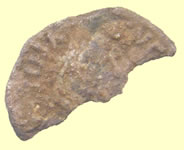
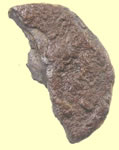
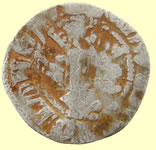


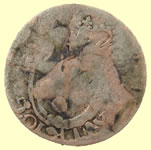
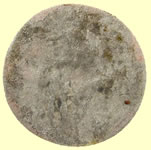

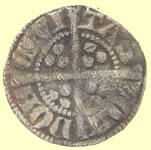

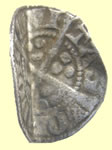
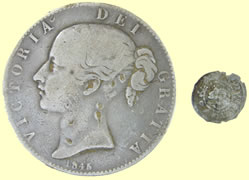
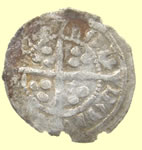
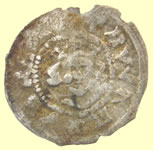
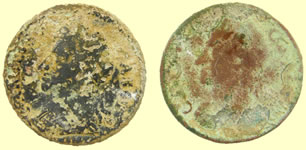
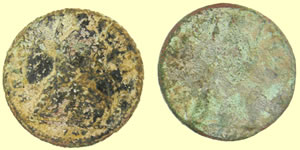

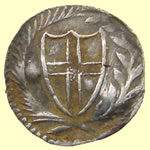
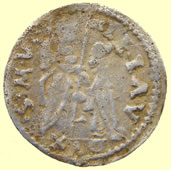
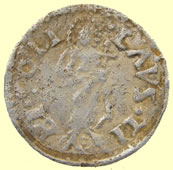
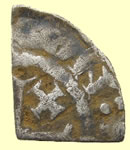
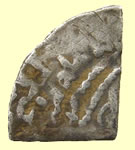

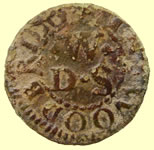
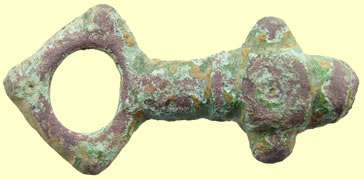



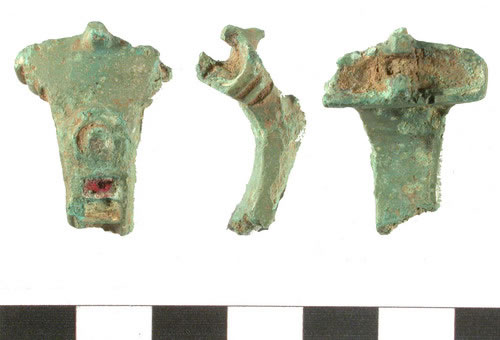

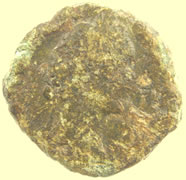

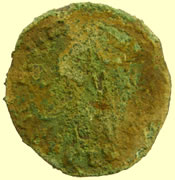
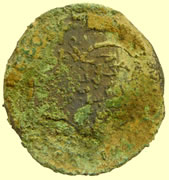
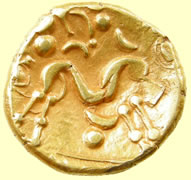
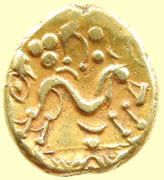
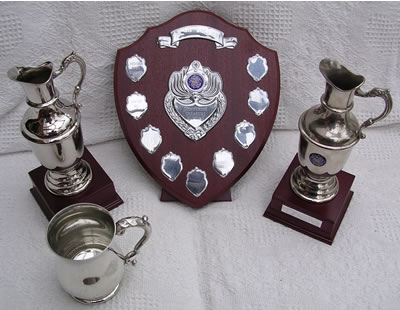


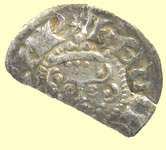
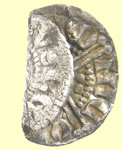


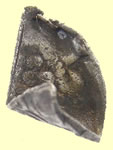
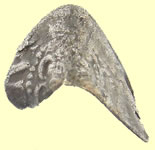
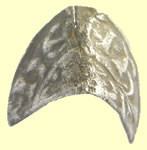
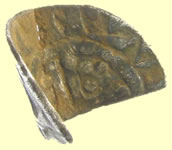
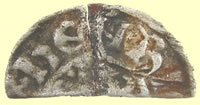
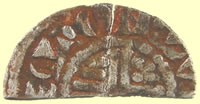
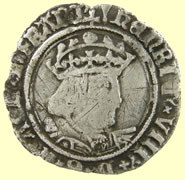
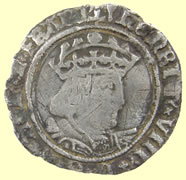
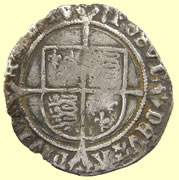
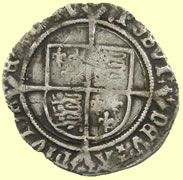
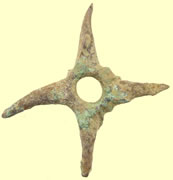
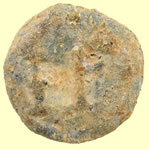
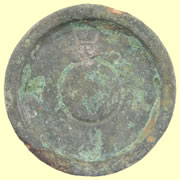
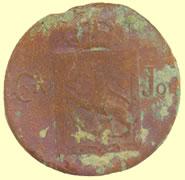
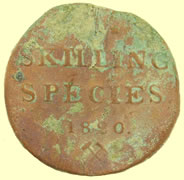

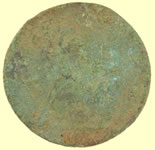
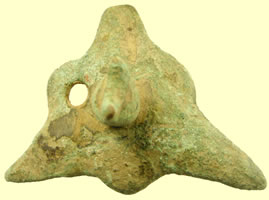
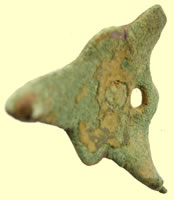
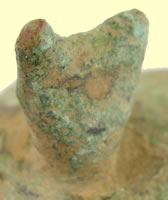

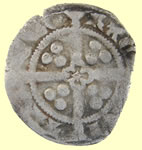

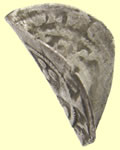
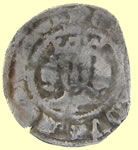
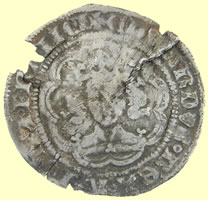
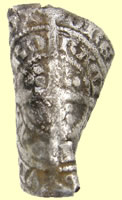
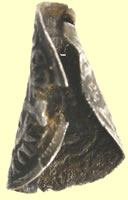
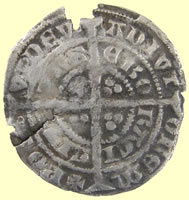
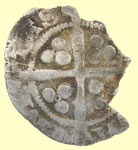
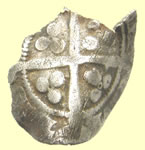
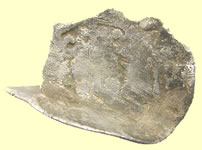
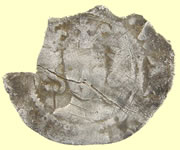
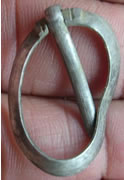
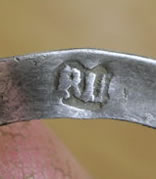
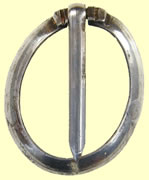
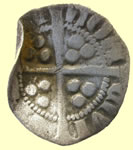
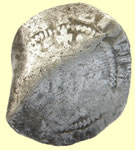

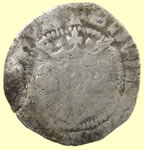
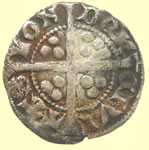
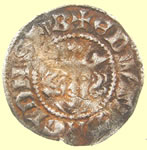
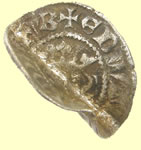
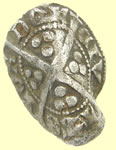
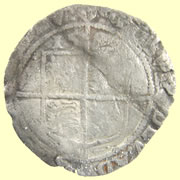

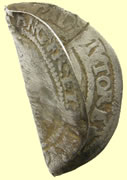
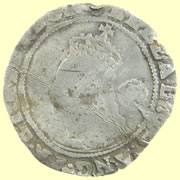

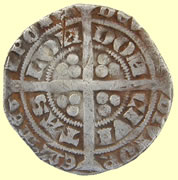
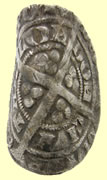
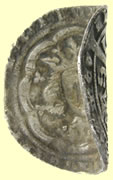
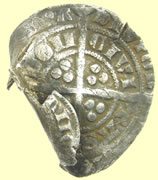
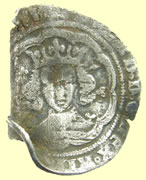
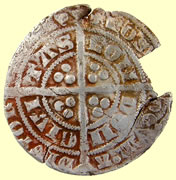
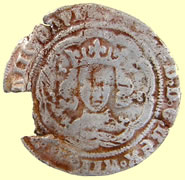
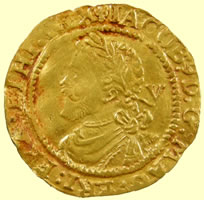
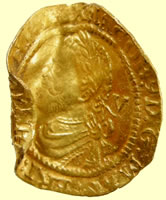


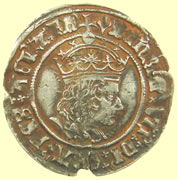 =
=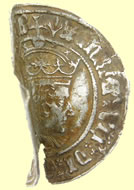
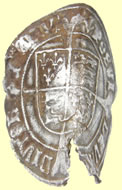
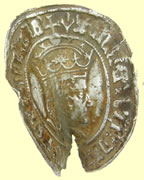
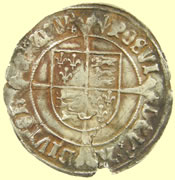



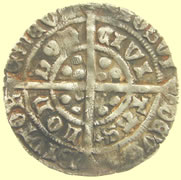
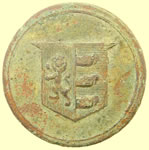
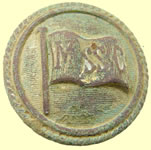
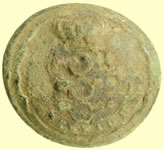
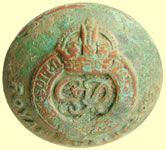
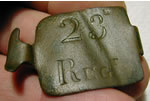

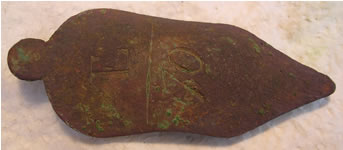
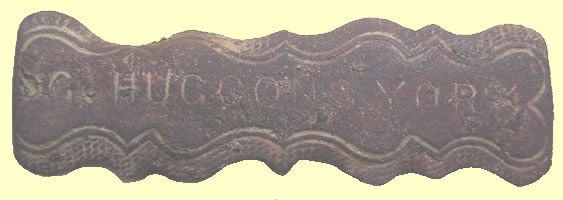

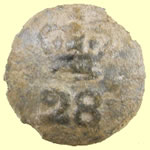
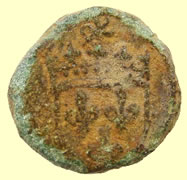

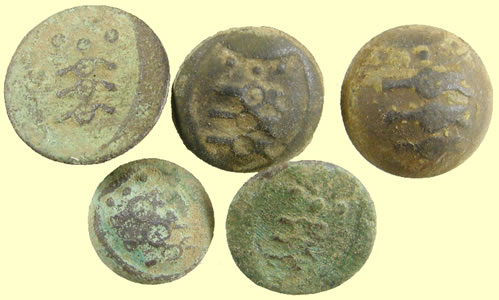
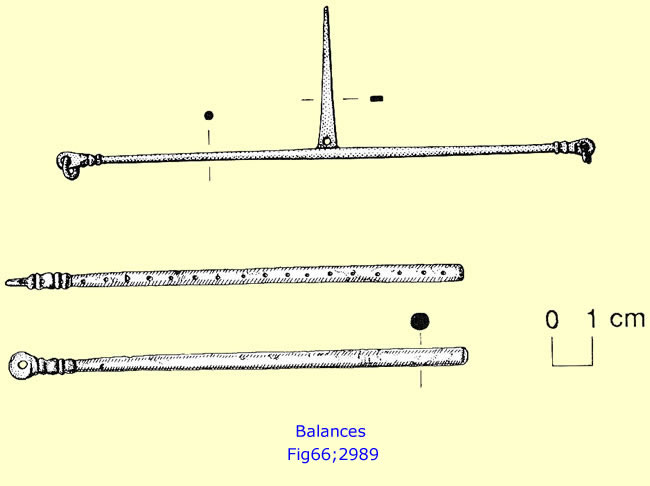
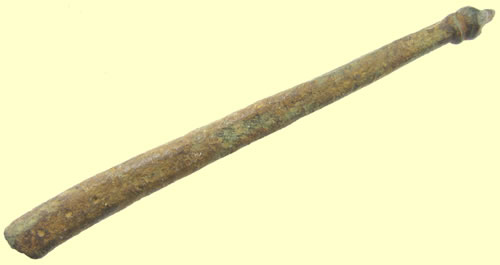
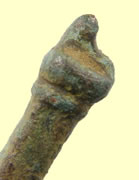
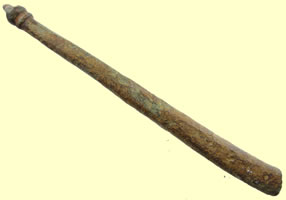

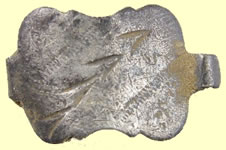
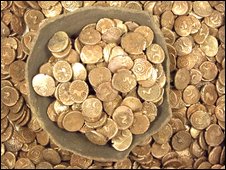
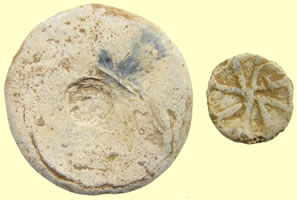
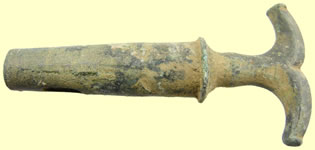
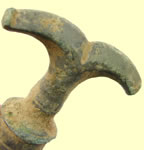
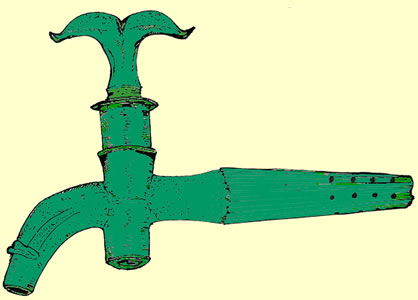
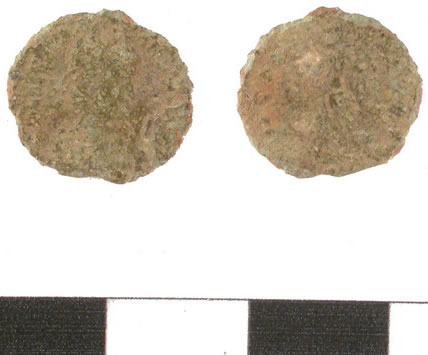
 Denomination:
Denomination: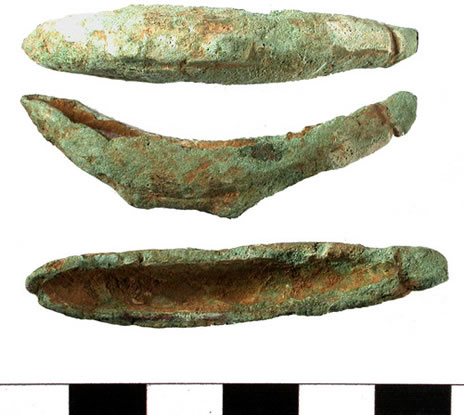
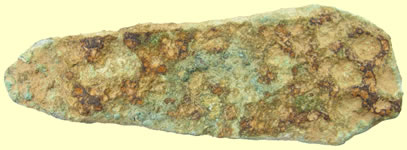
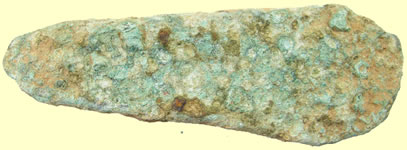



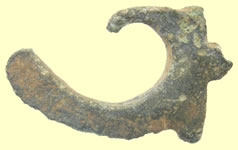

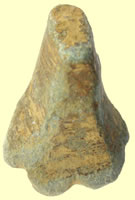
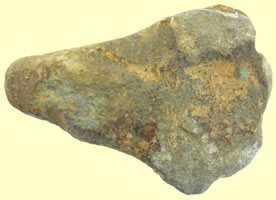
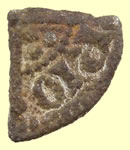
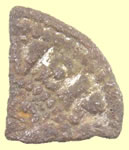

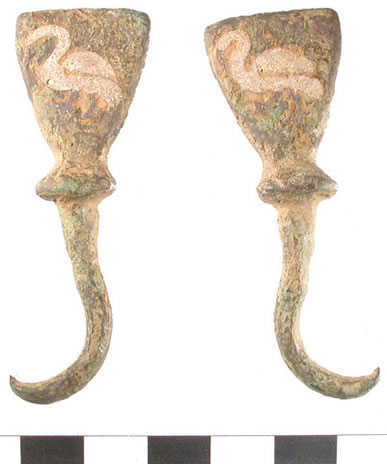
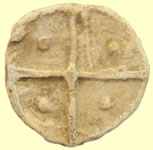
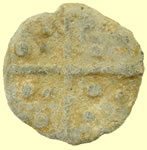
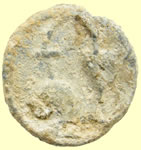
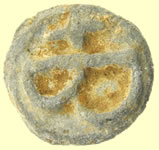

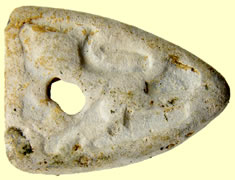


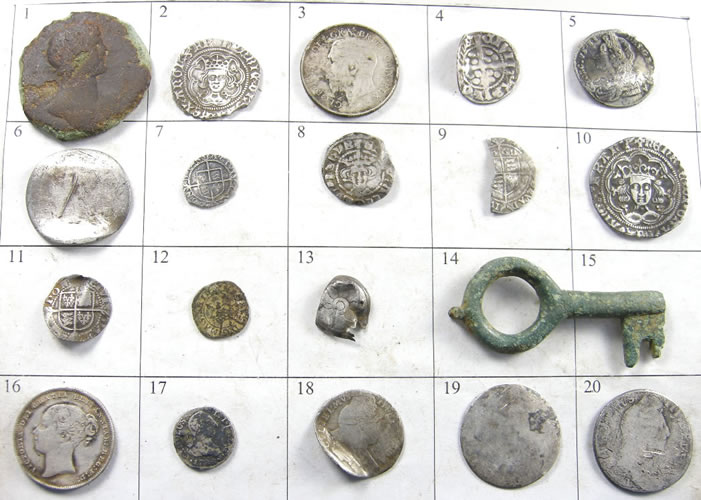
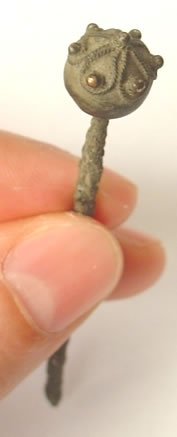 Marianchem just posted a really neat find from Serbia on the forum thinking it was Roman. It is in fact a 16thC Tudor period pin and amazingly in one piece. We have found two pin heads of that style which were sent to the British museum as treasure, they were dated as 16thC.
Marianchem just posted a really neat find from Serbia on the forum thinking it was Roman. It is in fact a 16thC Tudor period pin and amazingly in one piece. We have found two pin heads of that style which were sent to the British museum as treasure, they were dated as 16thC.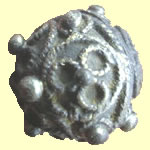
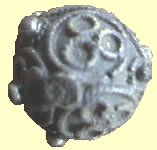
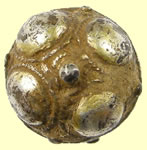
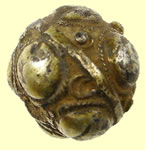


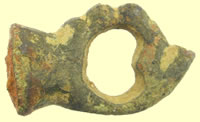
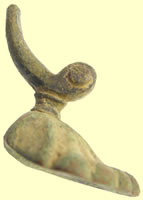
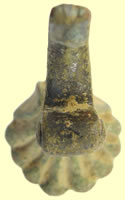
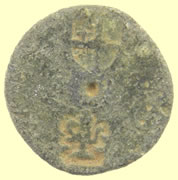
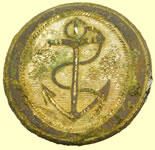



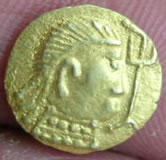
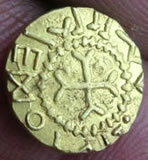
.jpg)
.jpg)
.jpg)








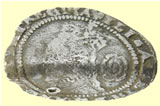
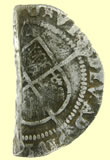




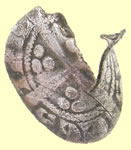
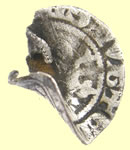

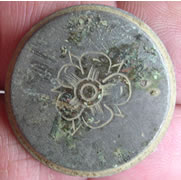
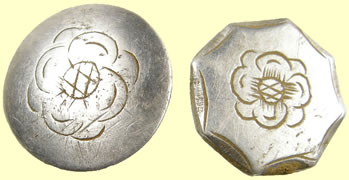
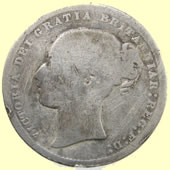

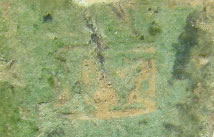






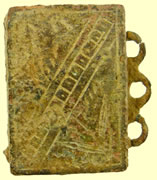
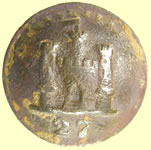
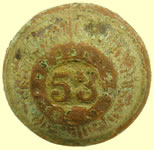
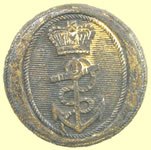

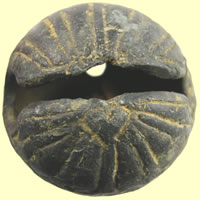
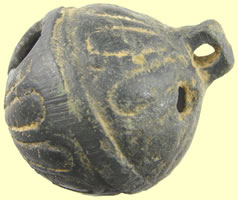

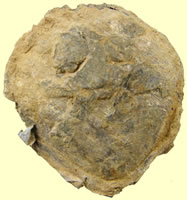
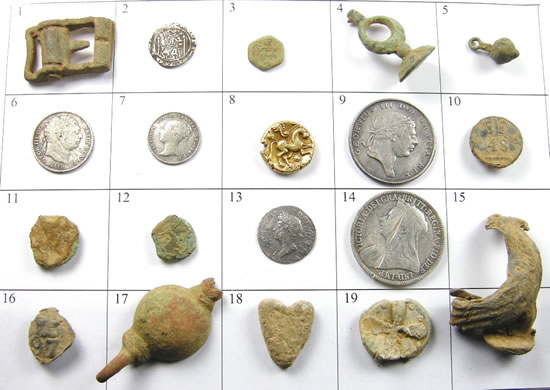
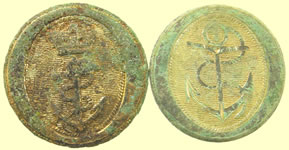
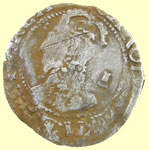
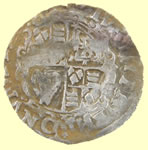
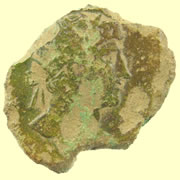
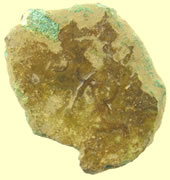

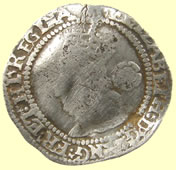
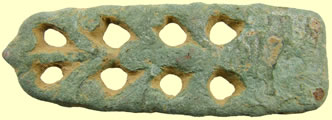
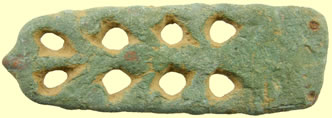
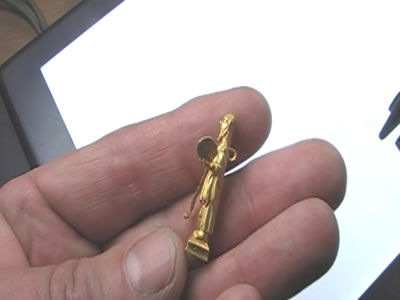
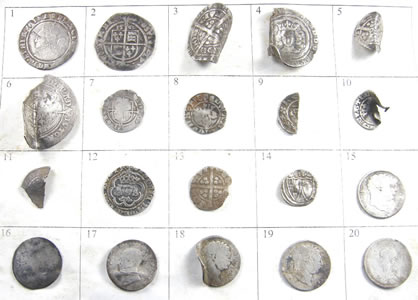

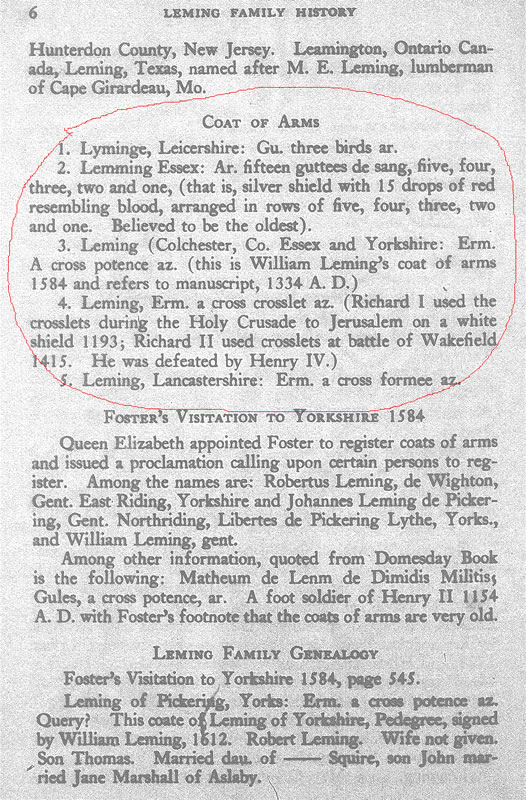

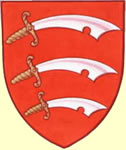
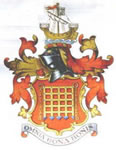
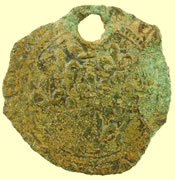
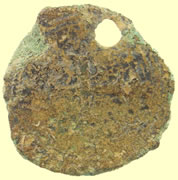
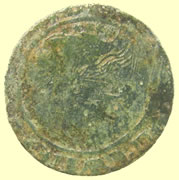
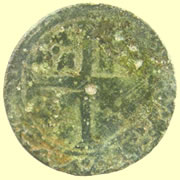

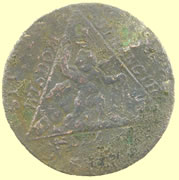
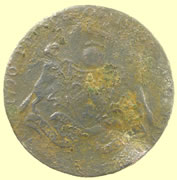


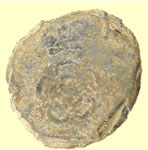

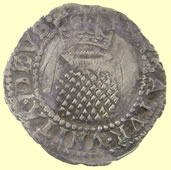

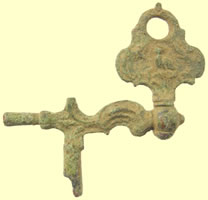

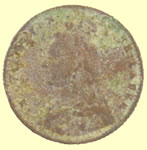
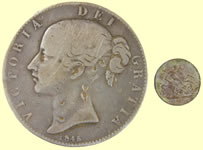
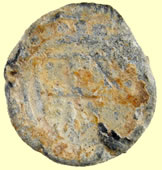


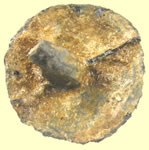

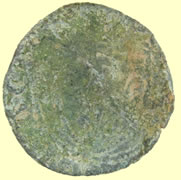
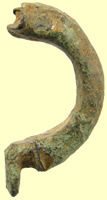

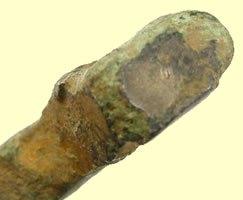
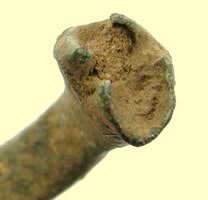



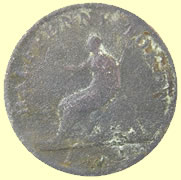

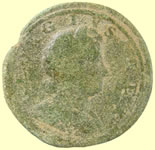
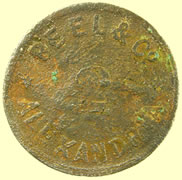
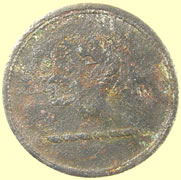
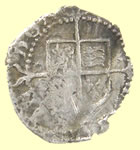
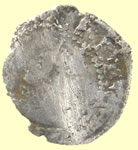
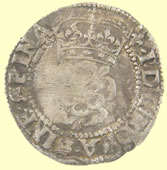
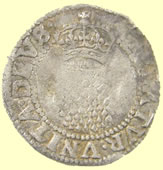
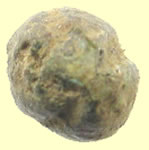

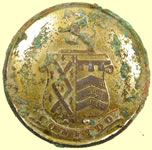
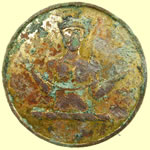
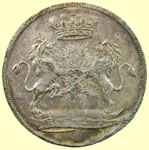
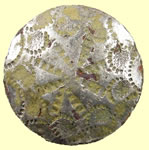
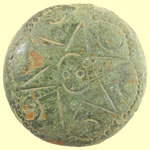
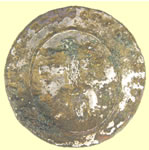
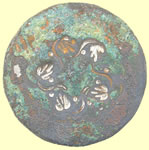
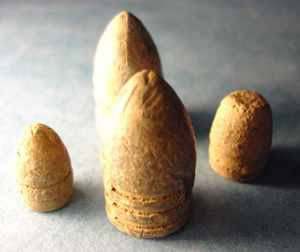 More find sheets and photo's uploaded to members area. Oregon Ed has written an interesting article on musket and minnie balls and their history for a local paper
More find sheets and photo's uploaded to members area. Oregon Ed has written an interesting article on musket and minnie balls and their history for a local paper 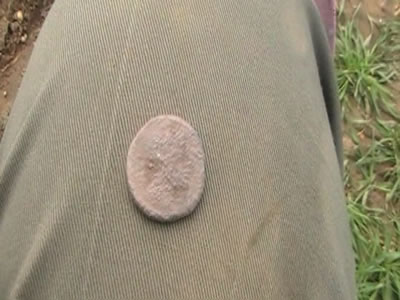
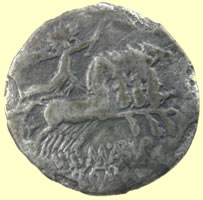
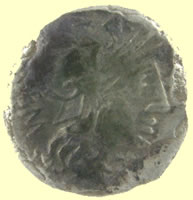
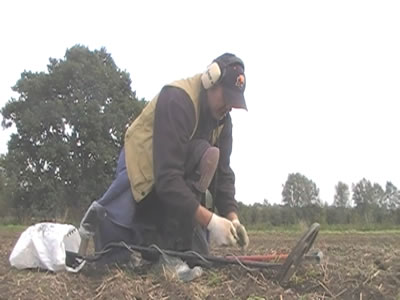
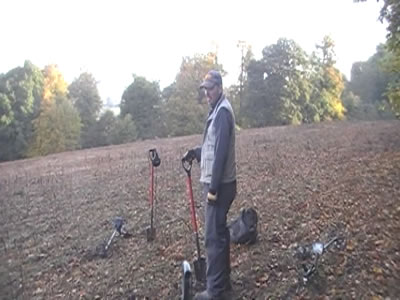
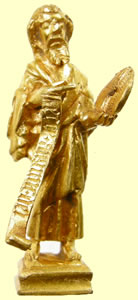
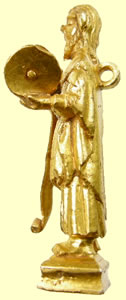
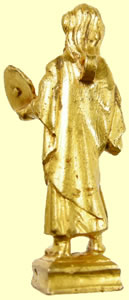


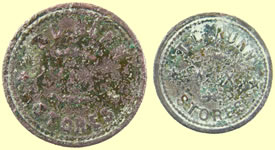

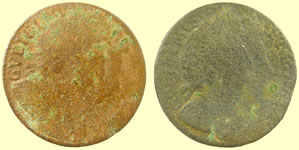

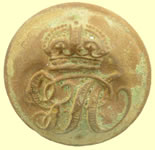

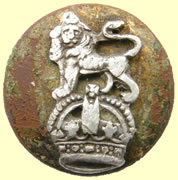

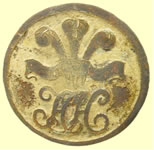
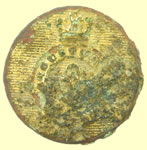
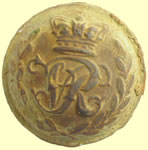
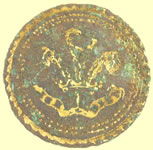
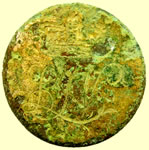
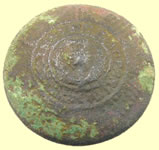
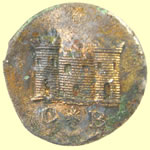
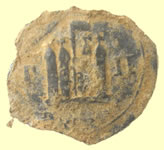
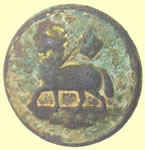

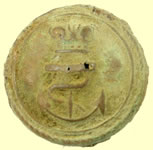


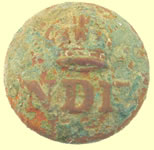


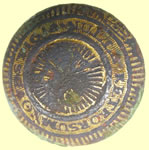

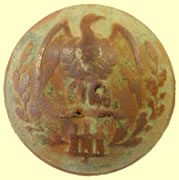


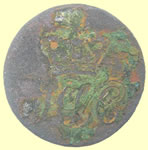


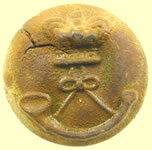

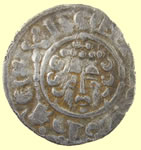
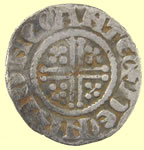
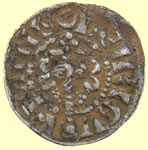
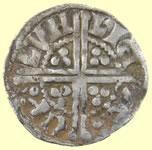
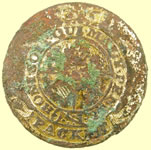


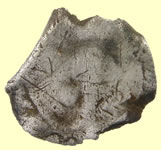
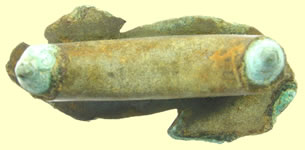
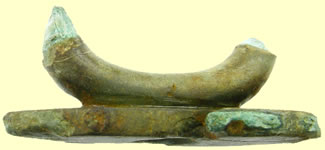
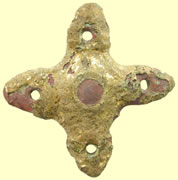
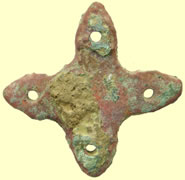
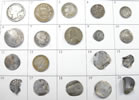
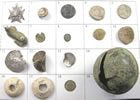
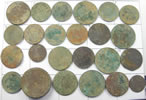
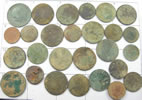
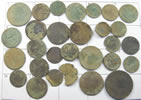
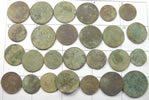
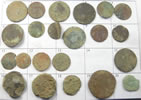
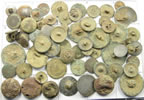
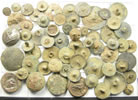
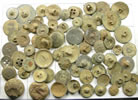
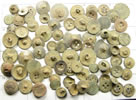
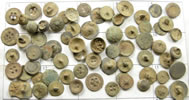
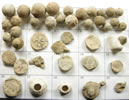
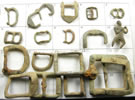
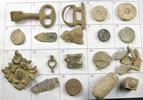
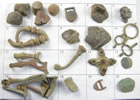
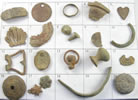
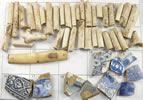
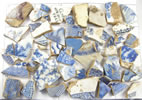
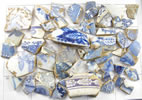
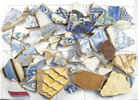


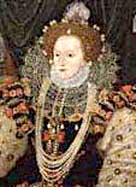


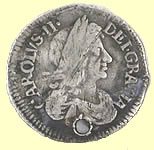
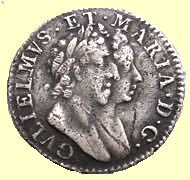
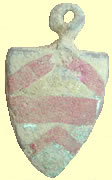
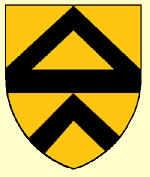
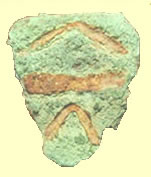
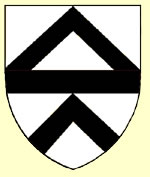
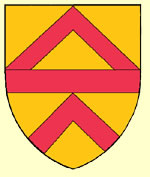
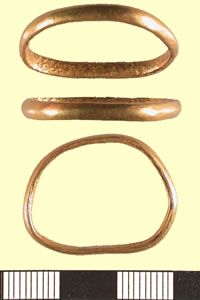
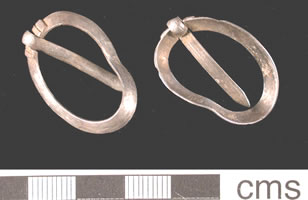
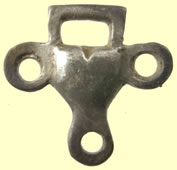
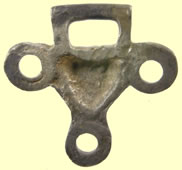
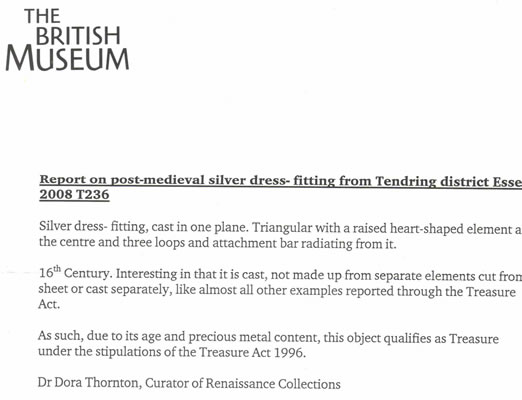
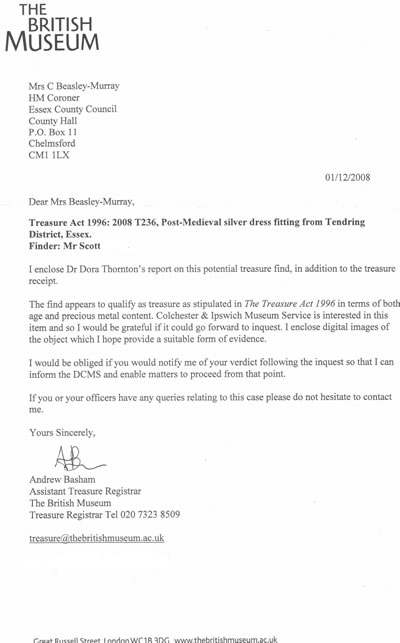
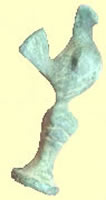
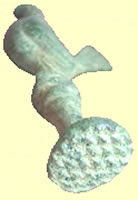




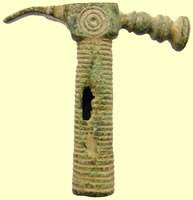
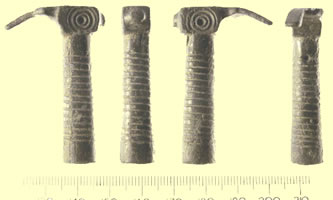


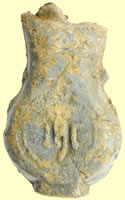
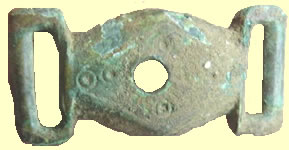
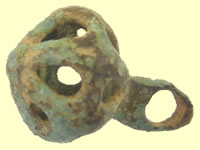
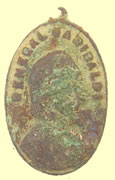


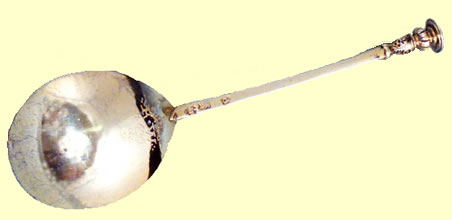
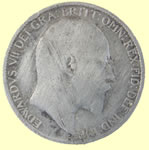
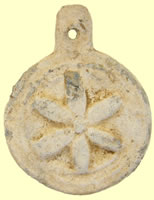
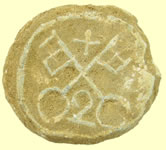
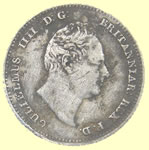
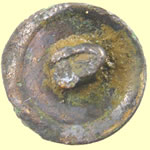
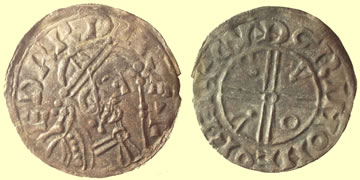





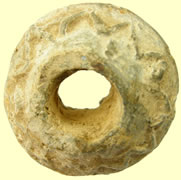
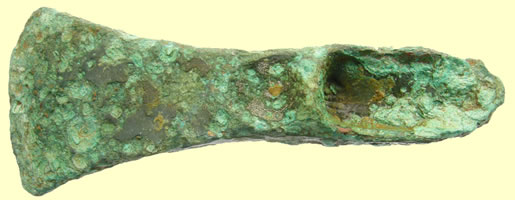
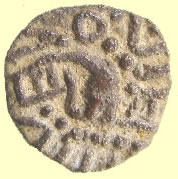
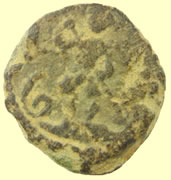
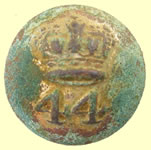
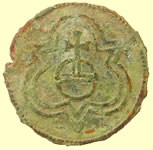

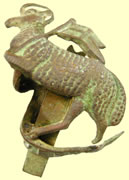


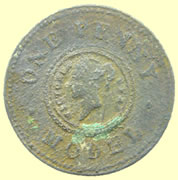

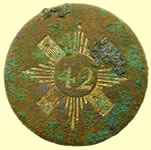
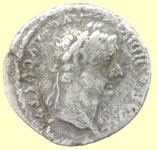


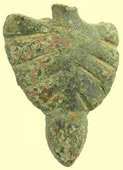




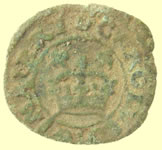
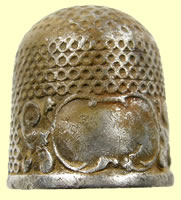
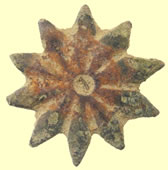

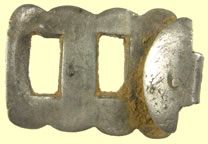
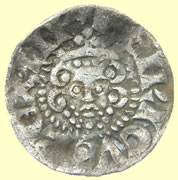
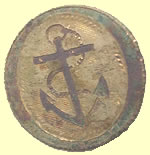
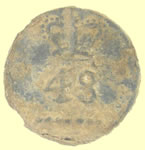
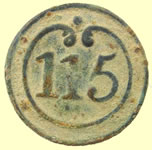
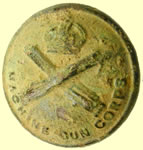
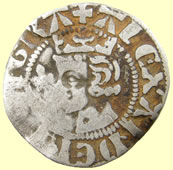
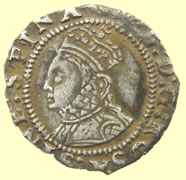
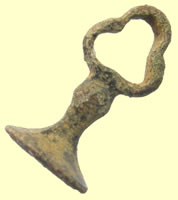
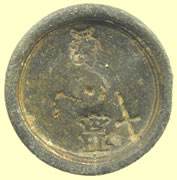

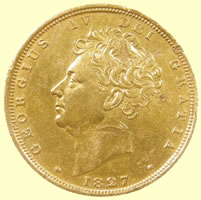
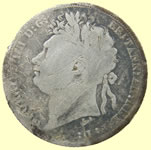

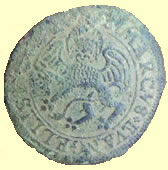

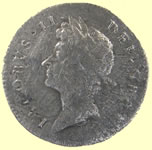
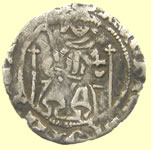

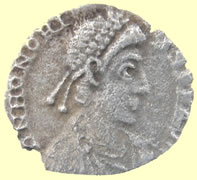
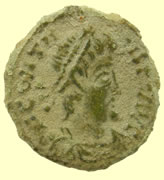
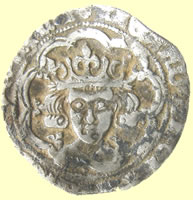

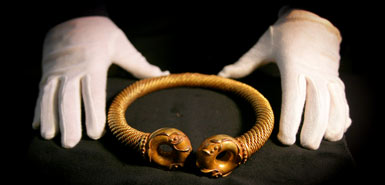



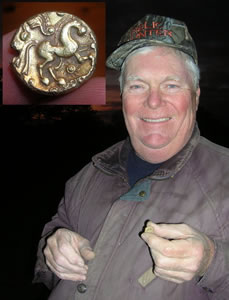 I have finally managed to condense Sal's 85 hours worth of video he took with his 'hat cam' while out hunting. It is still a large video at 90 minutes as he captured nearly all his good finds from the first shovel full to his reaction when he saw what it was. It also includes Canadian Gord's reaction that evening after he had found his Celtic gold and Idaho Gerry presenting Sal with the 'find of the year' award for his English Saxon gold find from last season. Click this link to
I have finally managed to condense Sal's 85 hours worth of video he took with his 'hat cam' while out hunting. It is still a large video at 90 minutes as he captured nearly all his good finds from the first shovel full to his reaction when he saw what it was. It also includes Canadian Gord's reaction that evening after he had found his Celtic gold and Idaho Gerry presenting Sal with the 'find of the year' award for his English Saxon gold find from last season. Click this link to 